In a small bathroom, everything must focus on achieving results. Here, tile becomes not just a finishing material, but a key tool for visually enlarging a small area. At the same time, you don’t have to sacrifice the aesthetics of design! In this article, we explain how to choose tiles for a small bathroom from both a beauty and practicality standpoint.
Selection Features
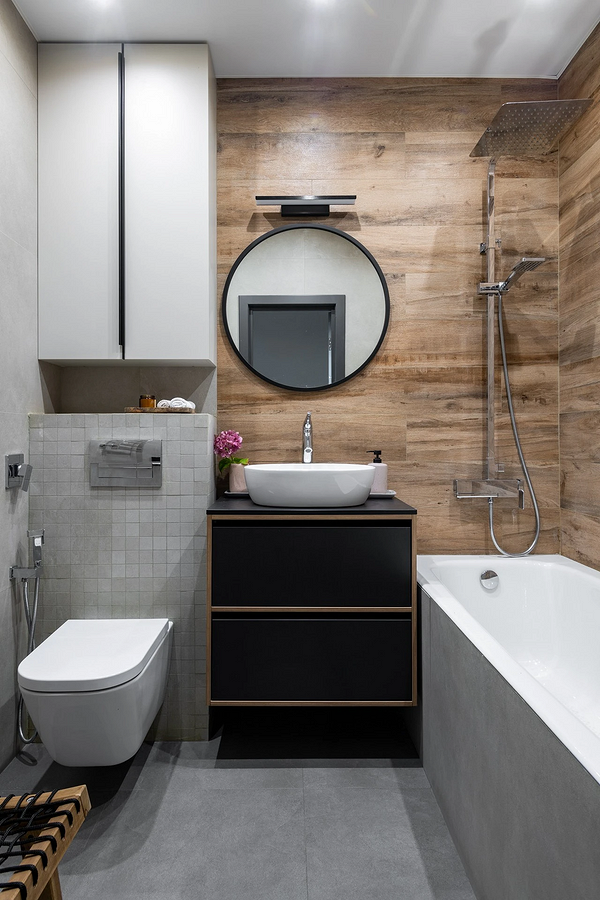
When planning the design of a bathroom with limited space, choose ceramics that hide the room’s flaws rather than highlighting them. With a wide range of options, you can narrow down your choices based on the following criteria:
- Tile size and shape
- Installation method
- Material texture.
- Style and palette.
Also, consider the area and shape of the bathroom itself, what kind of plumbing and furniture needs to be installed, and whether you plan to add decor or let the finish itself be the focal point.
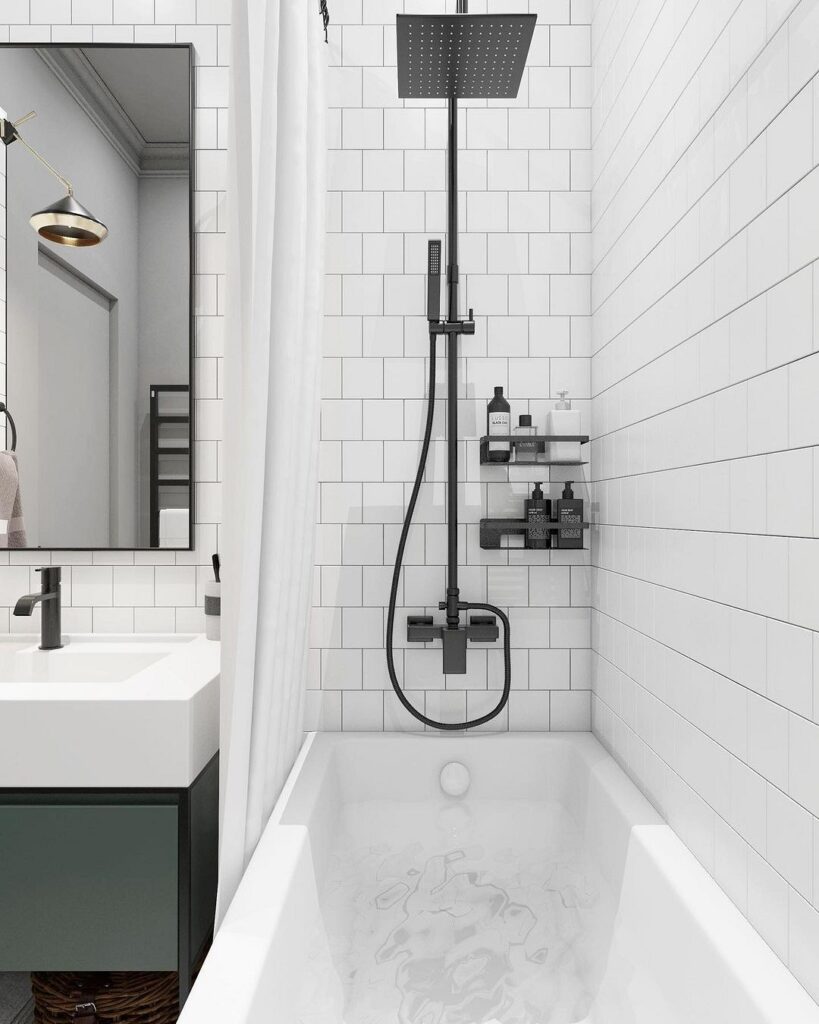
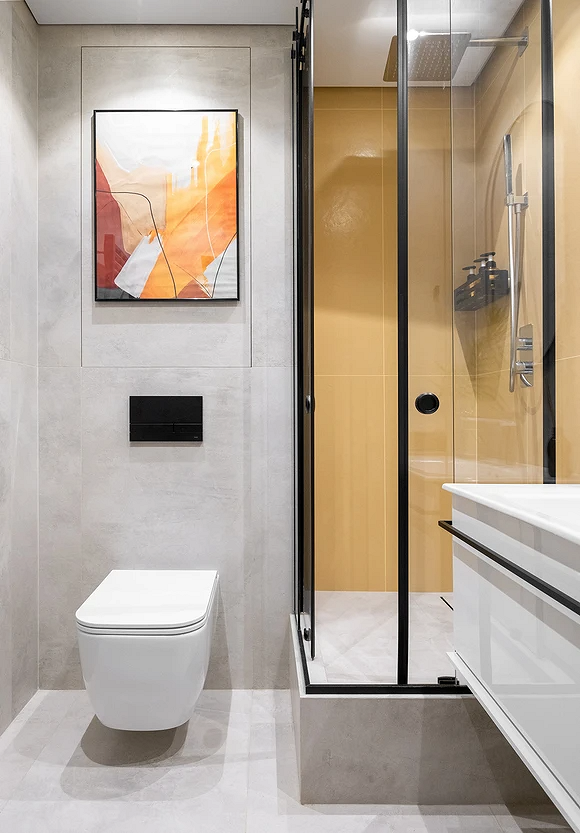
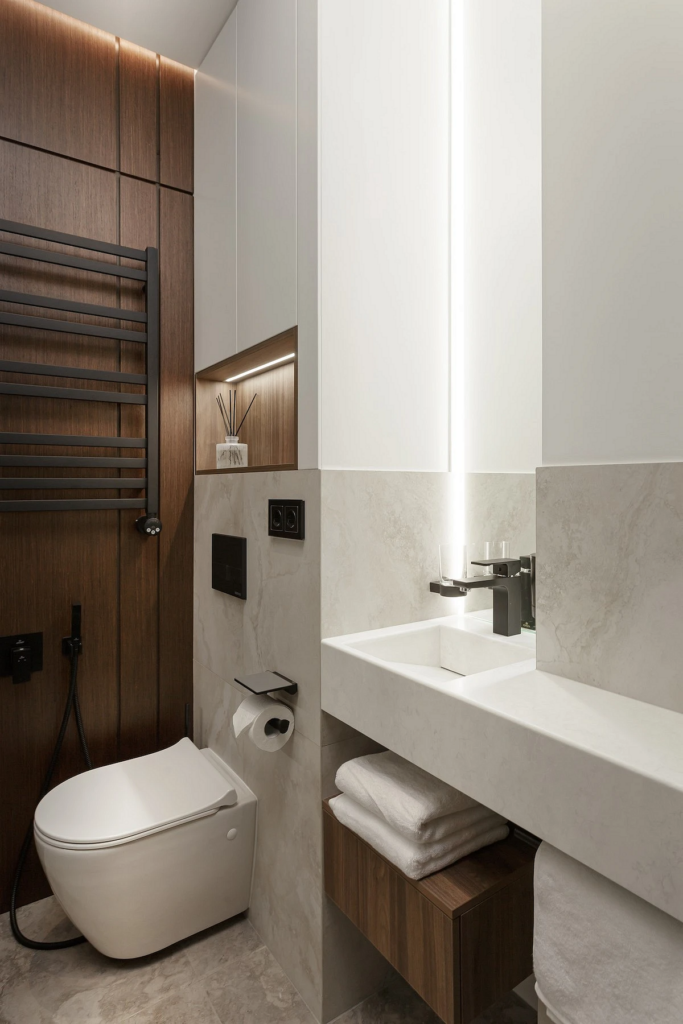
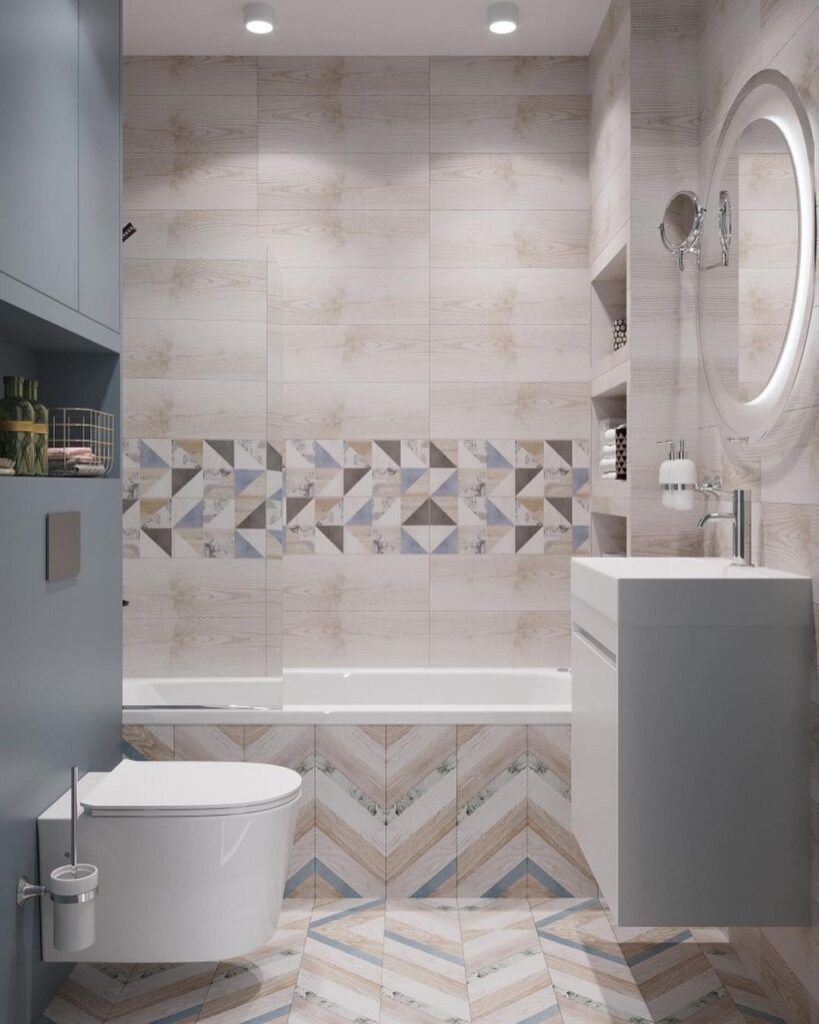
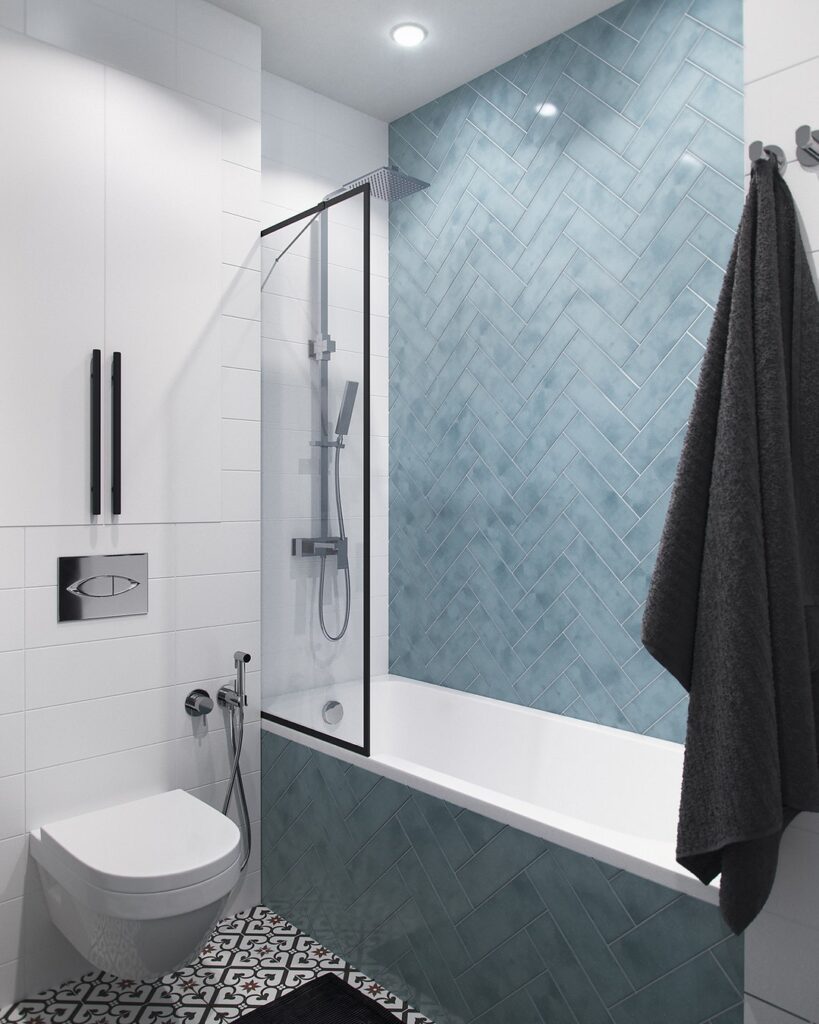
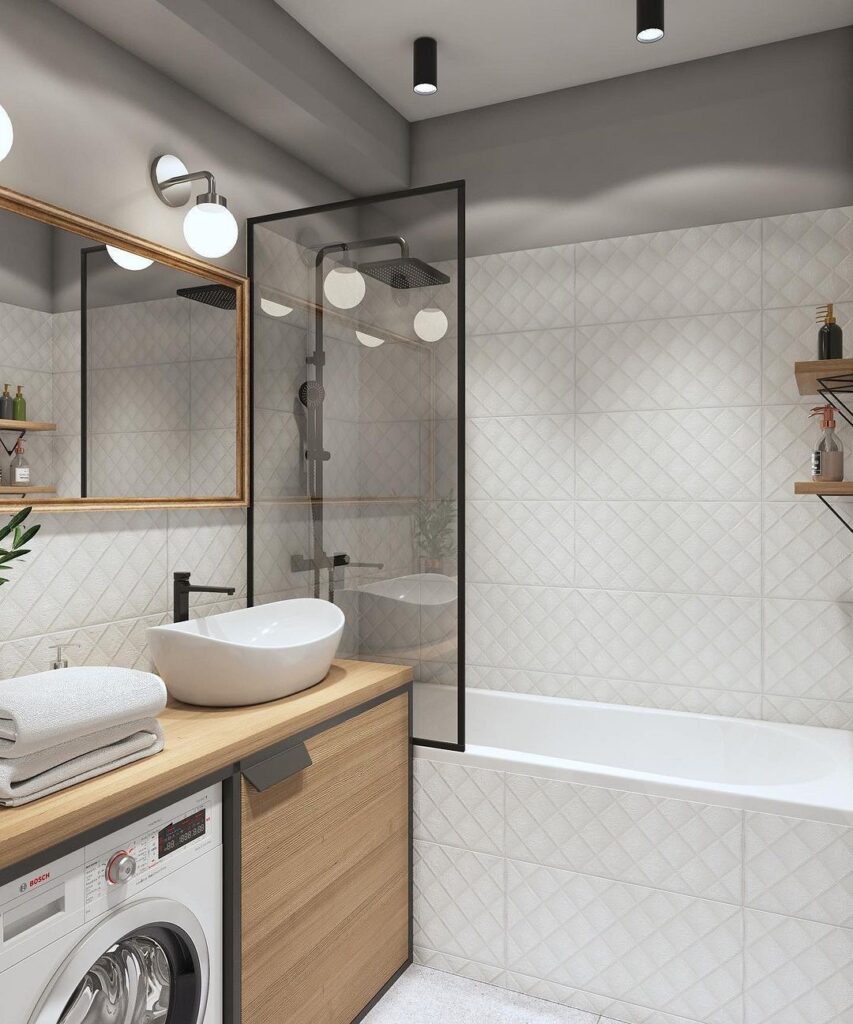
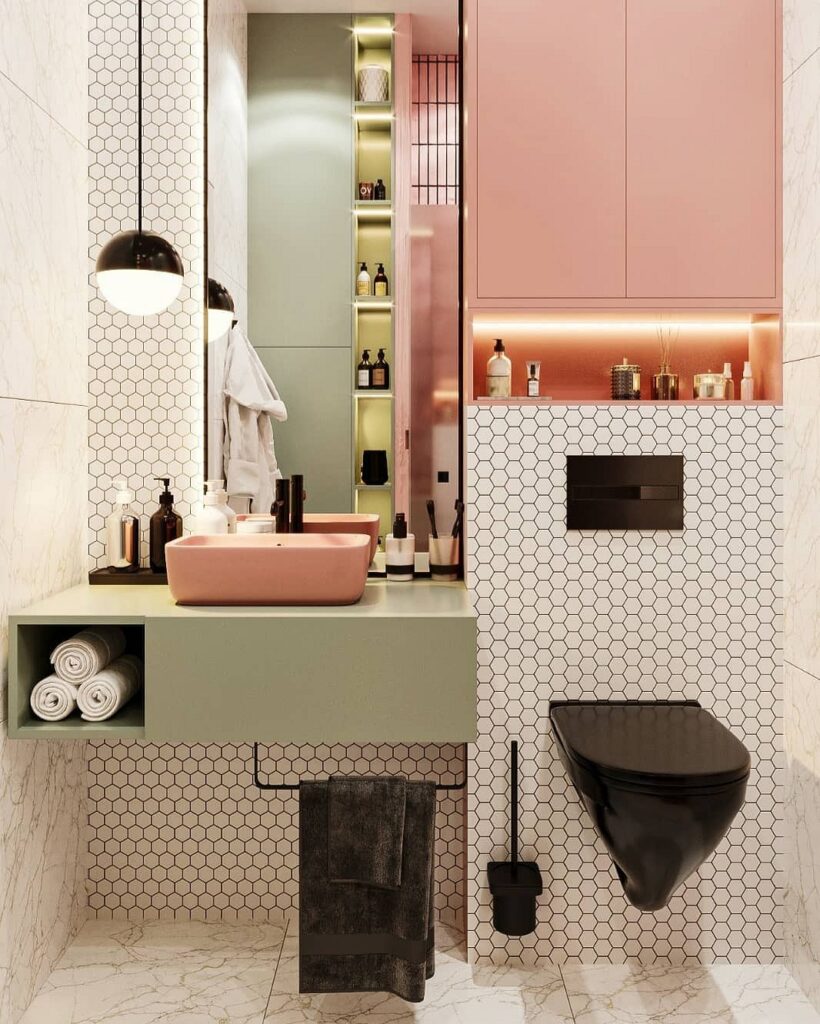
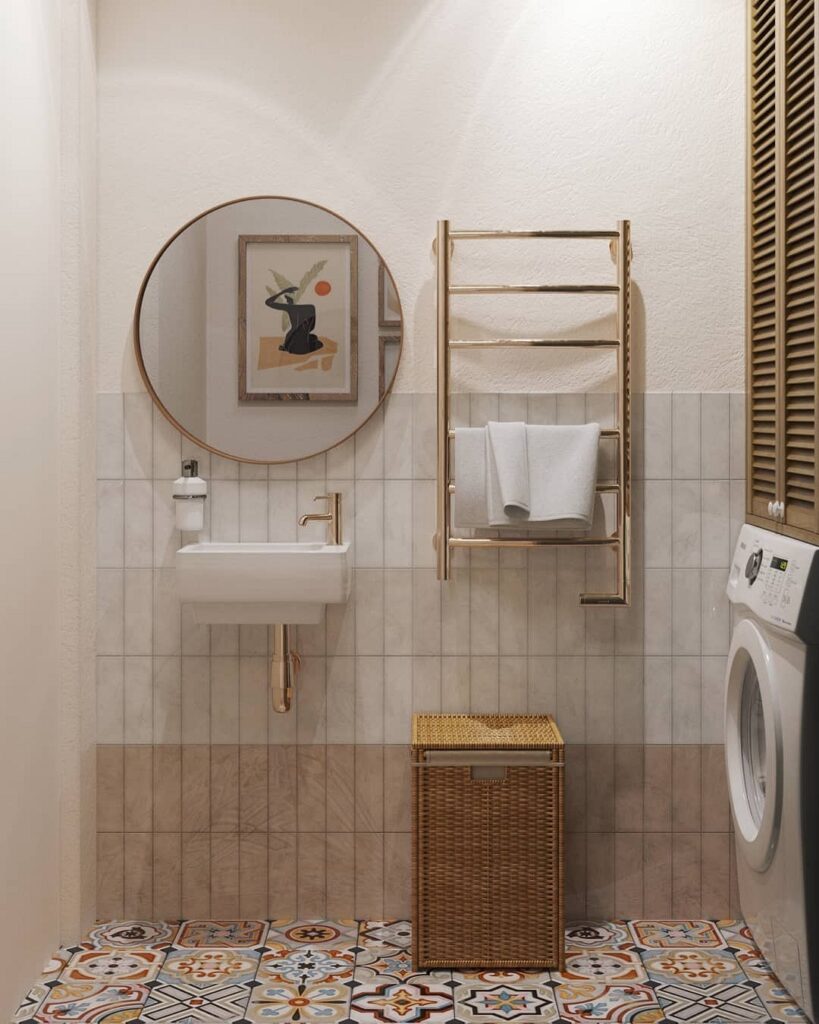
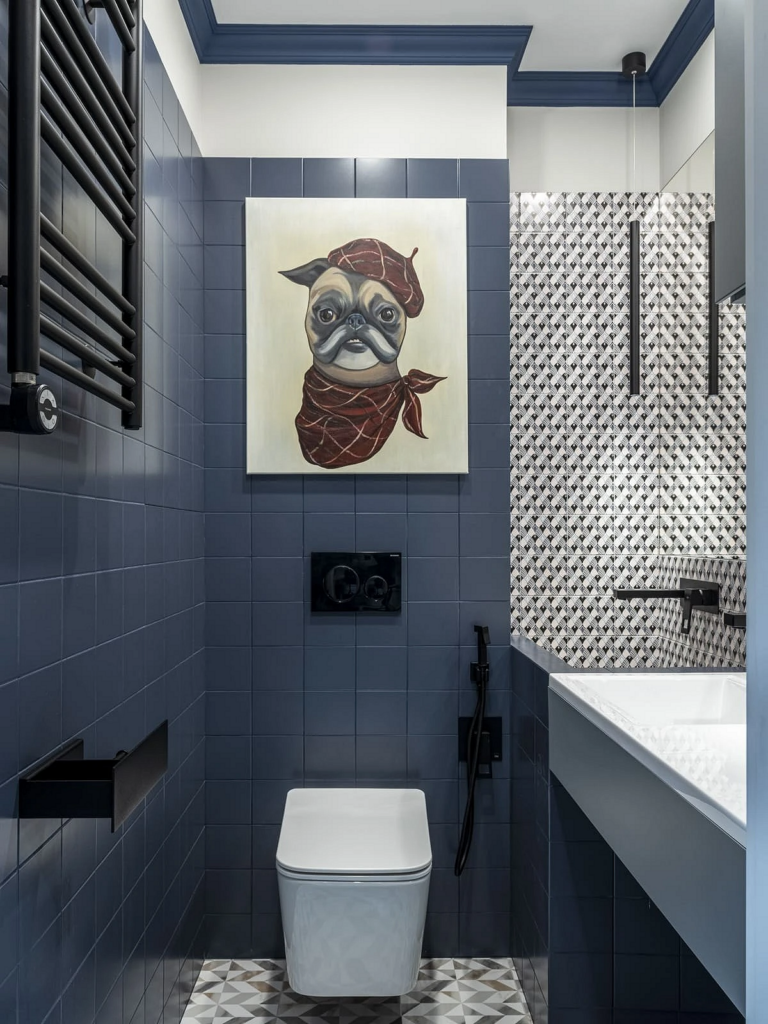
Tile Size
The size of the tiles is crucial as it directly influences how the room’s proportions are perceived.
Small
Using small tiles in a compact space might seem like the most sensible choice. However, it’s important to remember that to make the room appear larger, you should not visually divide the space. Therefore, when using small-format ceramics (from about 0.6 x 0.6 inches to 4 x 4 inches), avoid trendy contrasting grout (it’s better to camouflage the joints rather than highlight them), busy patterns, and multiple colors.
Using uniform mosaics or light-colored subway tiles can help erase the boundaries of the bathroom’s real dimensions. To avoid the “pool effect” and prevent eye fatigue from small patterns, it’s best to combine small mosaics with medium or large-format ceramics.
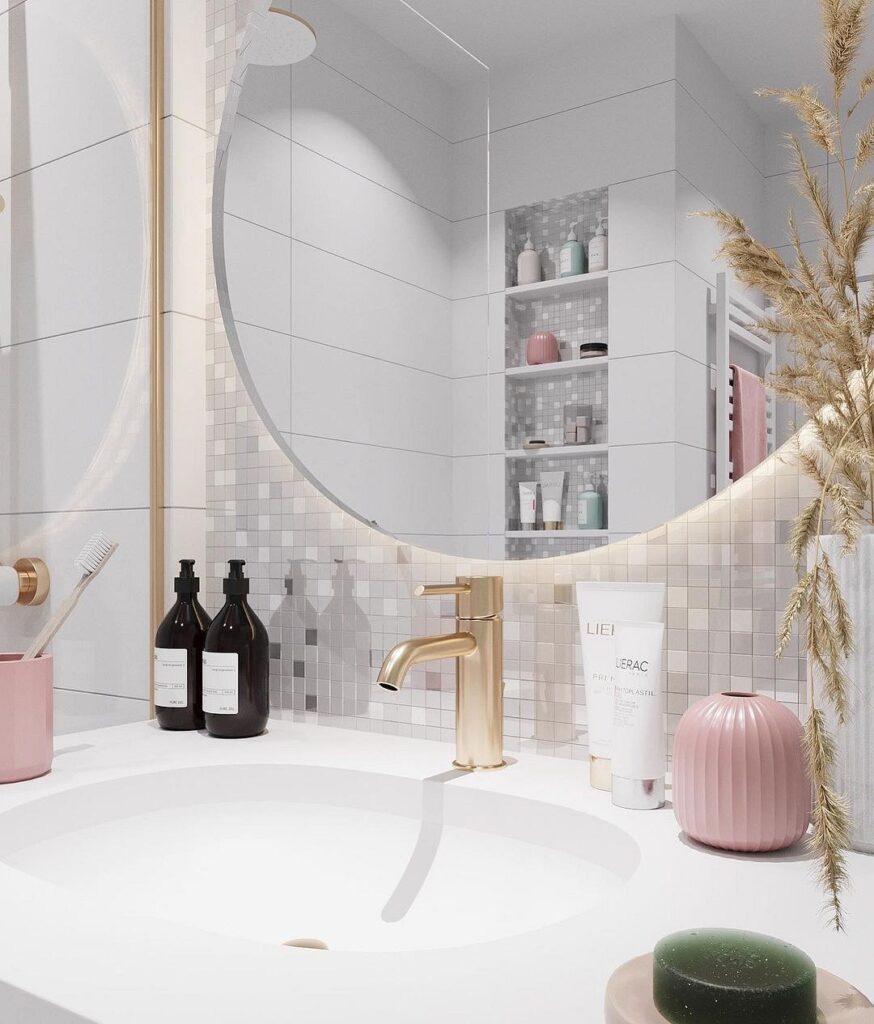
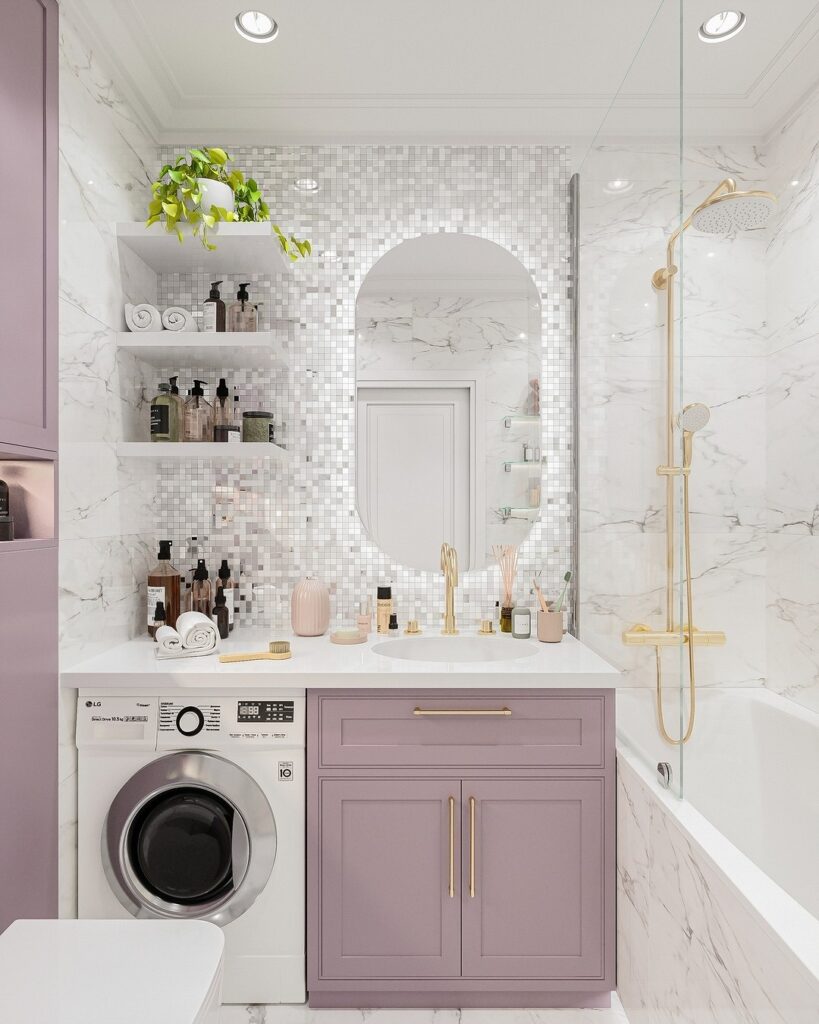
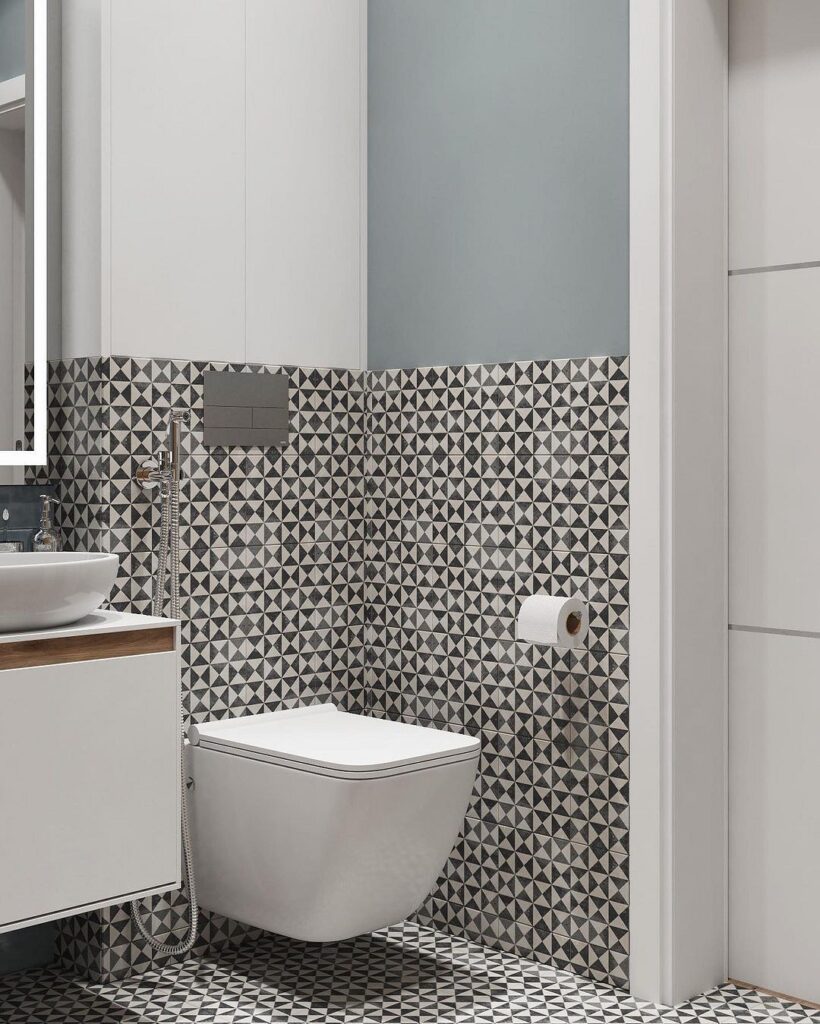
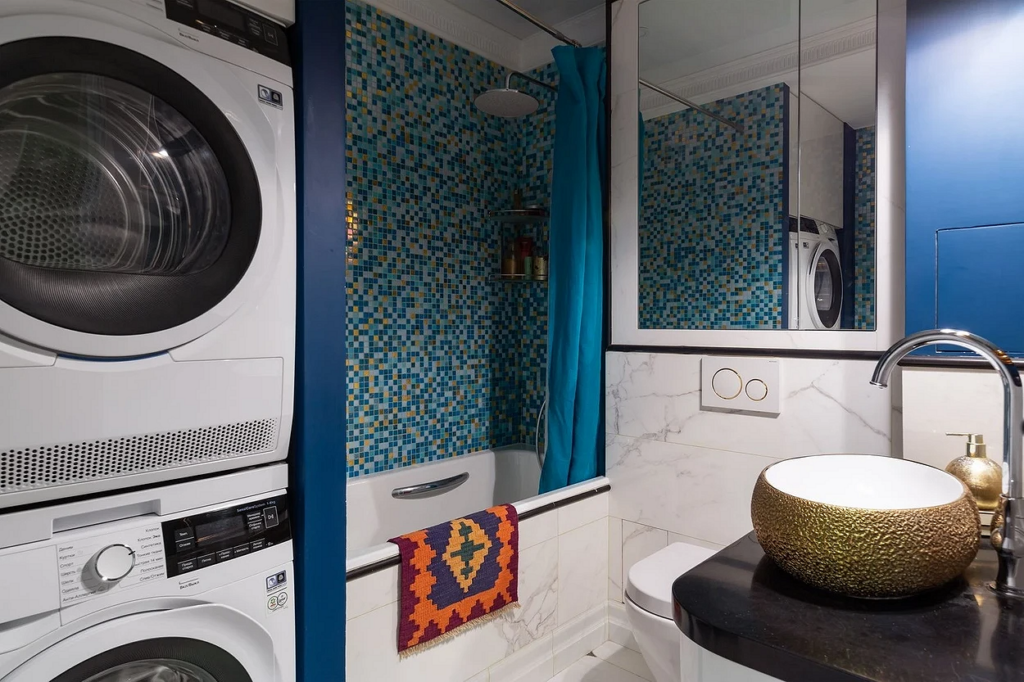
Popular formats include 8×8 inches, 20×8 inches, 12×12 inches, and 12×24 inches. You can choose finishes that match the shape of the room to adjust proportions: if the bathroom is elongated, rectangular tiles will look good, whereas in a well-proportioned bathroom, square tiles are suitable.

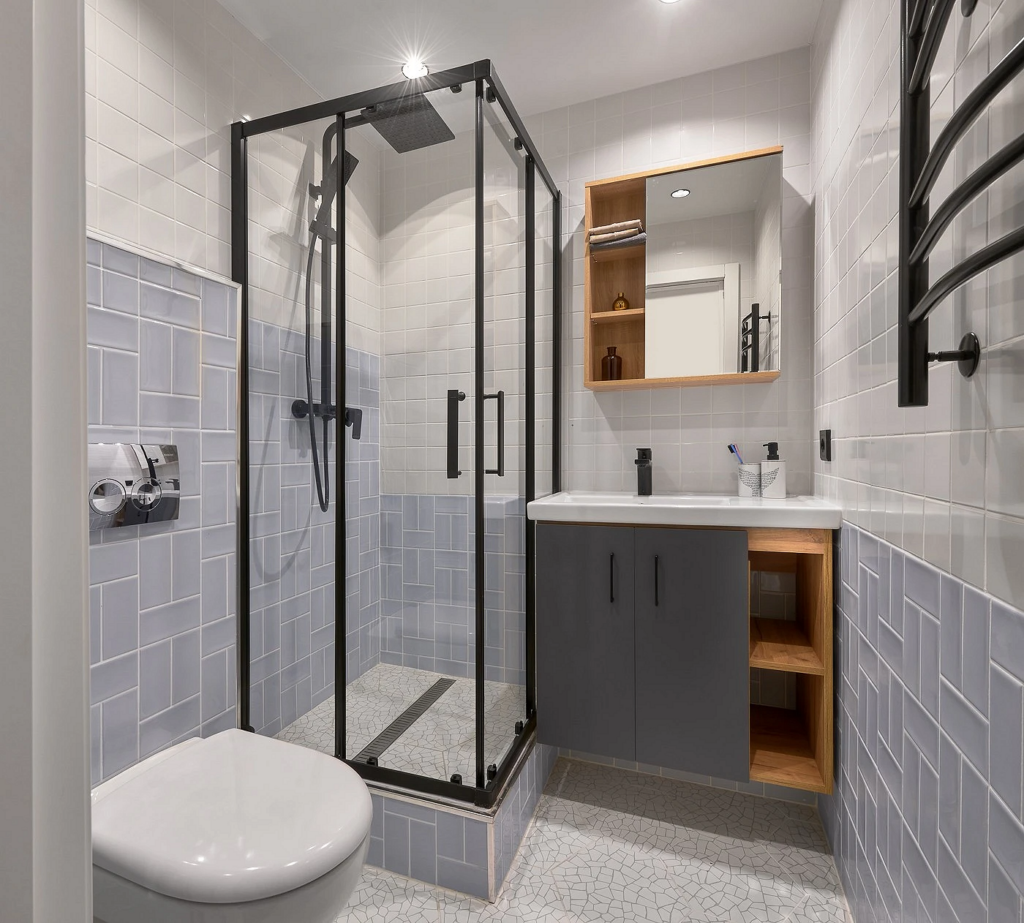
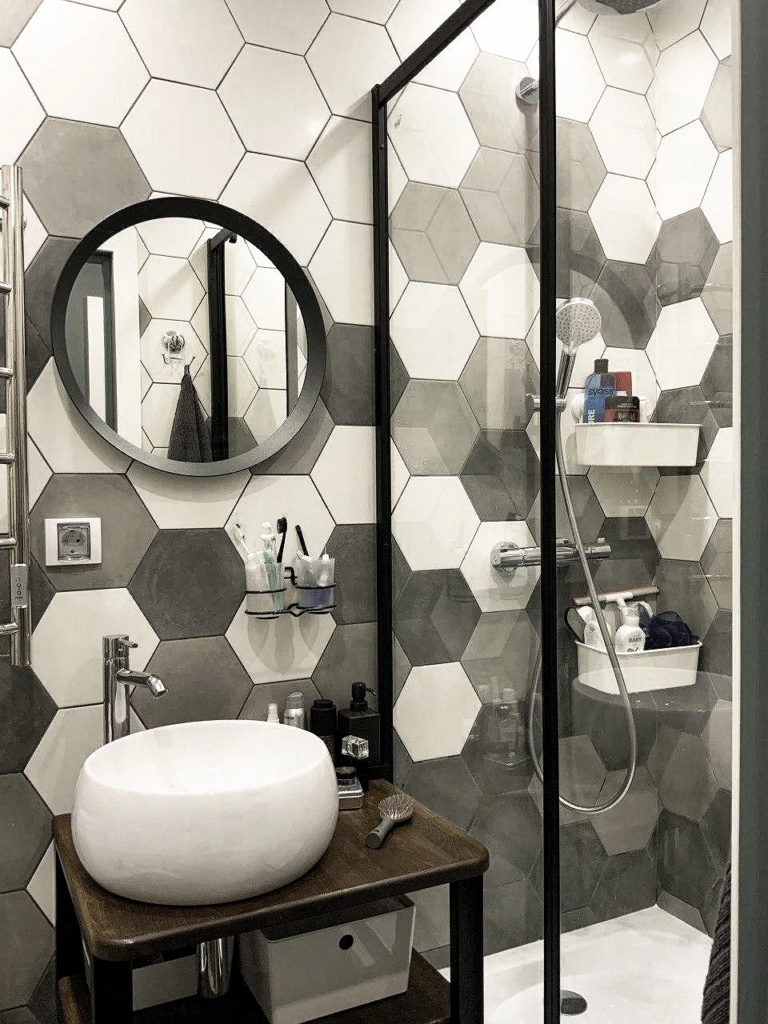
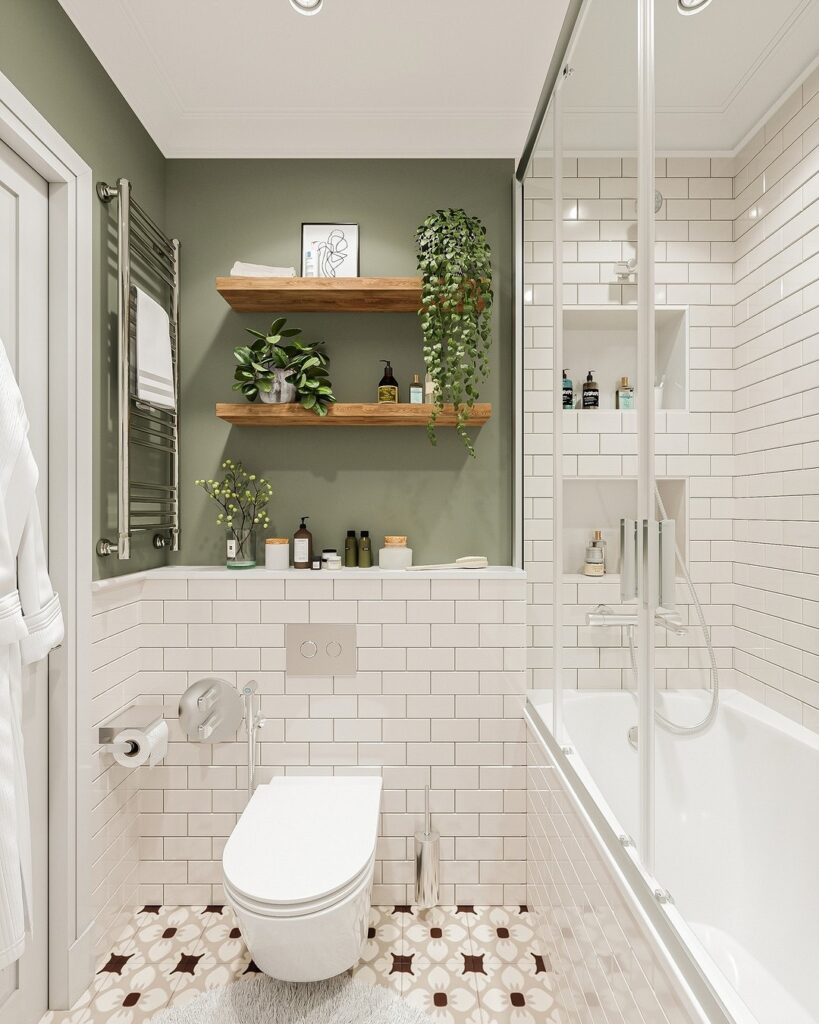
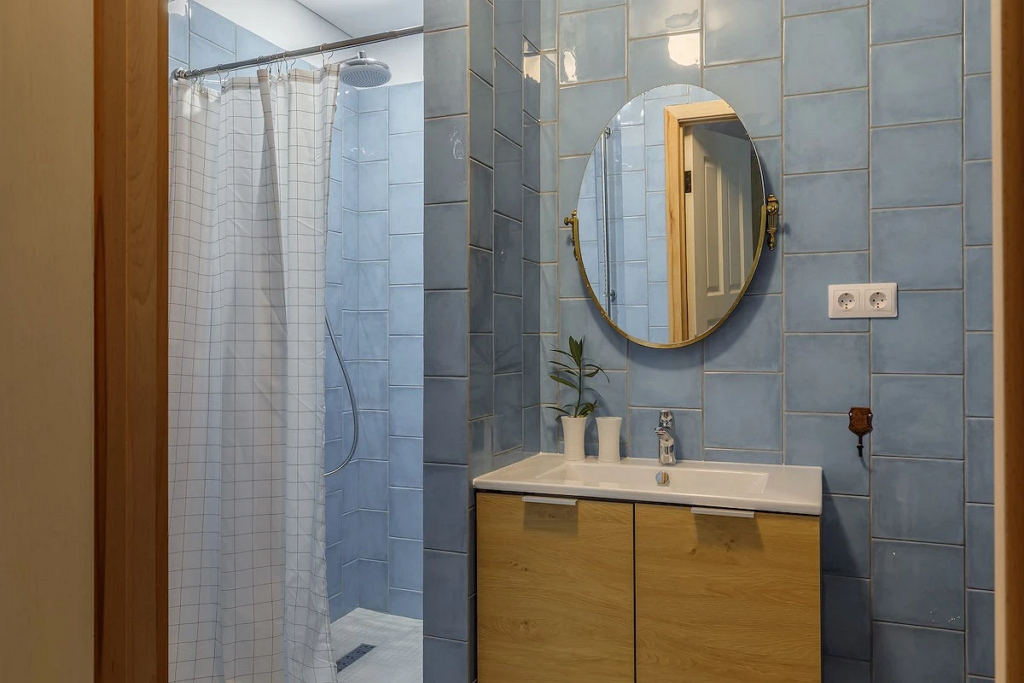
Large
Although large-format tiles previously had many detractors, they are now among the most popular choices, including for small bathrooms.
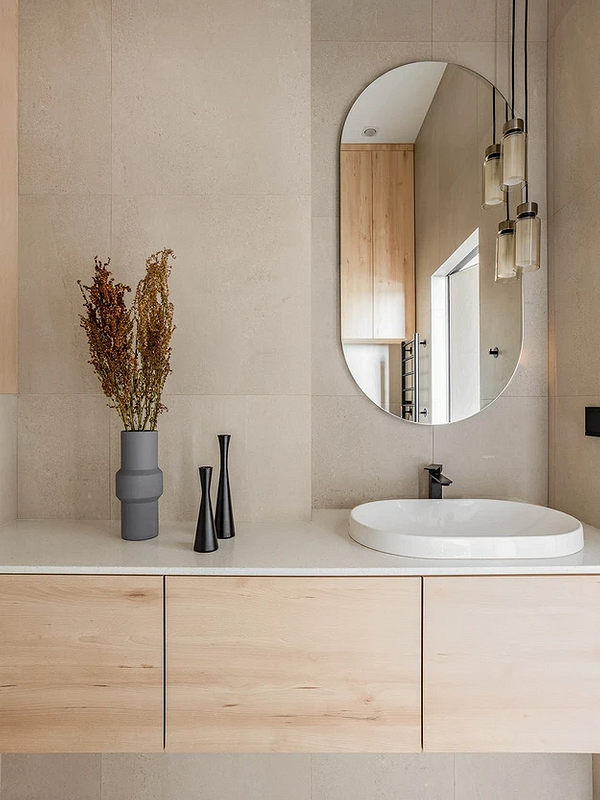
Important to know:
- Using grout that matches the tone or laying the panels in a seamless method achieves the effect of a monolithic surface.
- Like mosaics, large-format tiles work well with other sizes—this technique makes the space more interesting, and the large tiles do not “overwhelm” and turn the bathroom into a small box.
- Another purely practical advantage is fewer grout lines, which simplifies bathroom cleaning.
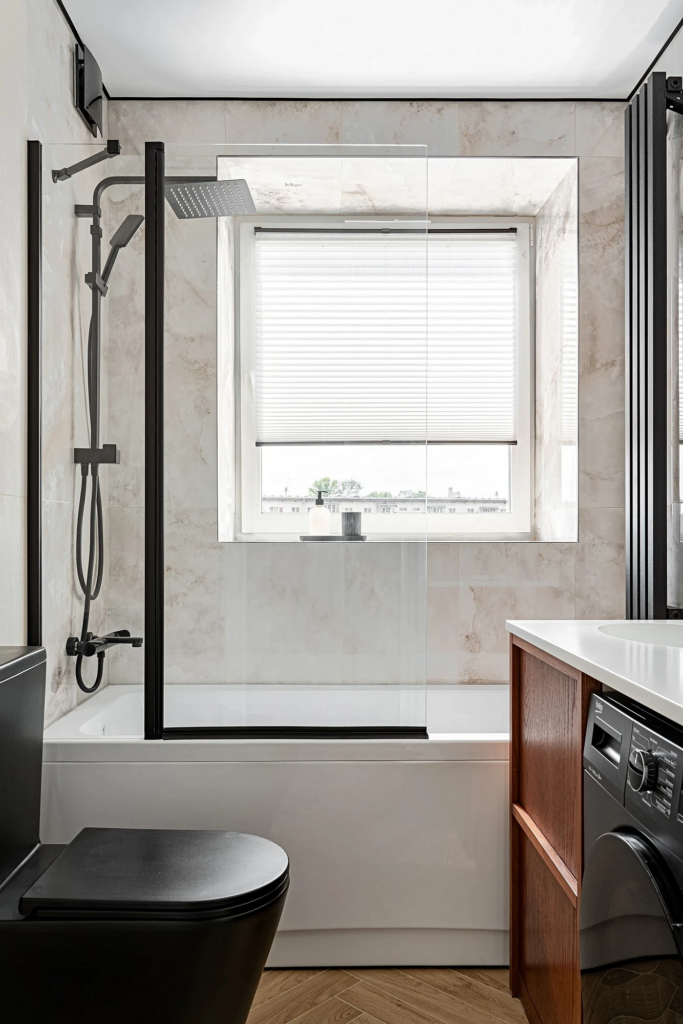

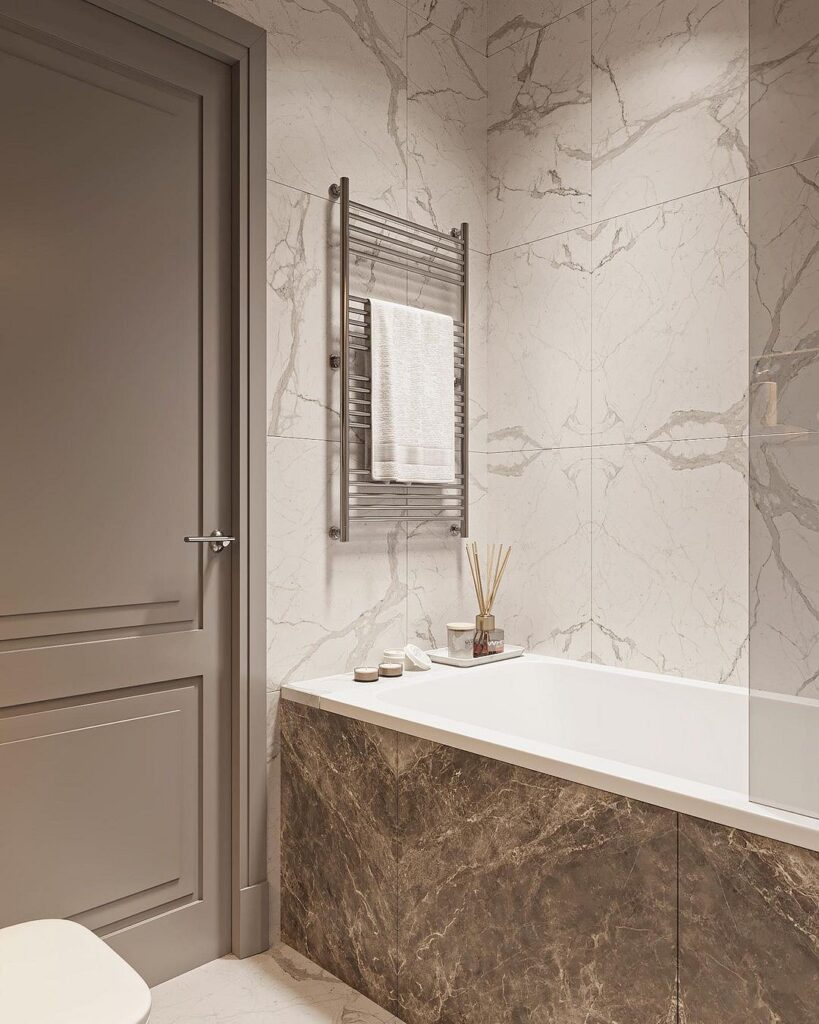
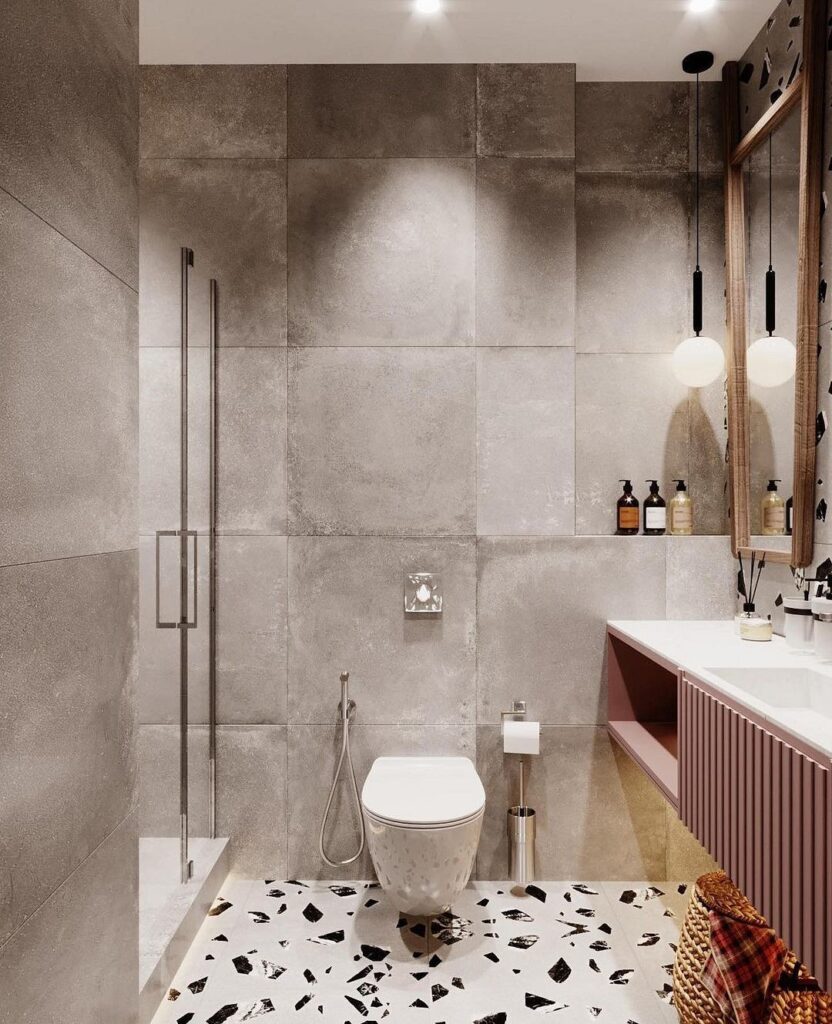
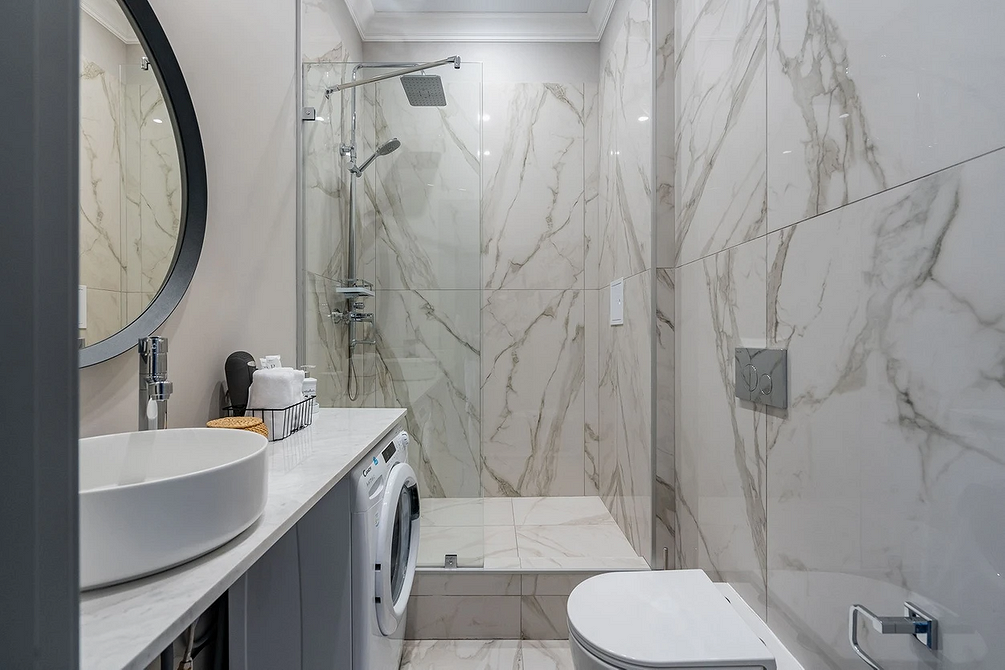
Tile Installation Methods
In a small space, the tile layout matters significantly. Let’s look at the most popular tile arrangement options for a small bathroom, complete with design photos.
Classic
The simplest and safest option is a straight set installation, where the tiles are aligned in rows directly above each other, parallel to the floor. If the tiles are rectangular, it’s better to lay them horizontally to make the room appear wider and more spacious.
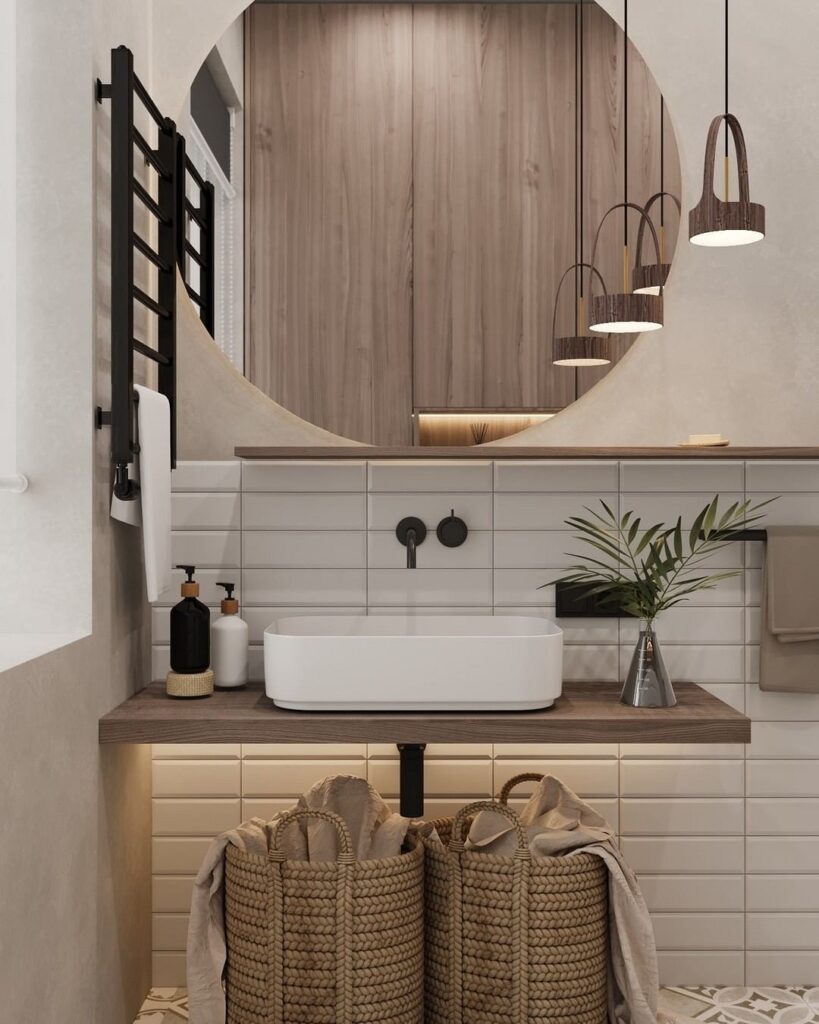
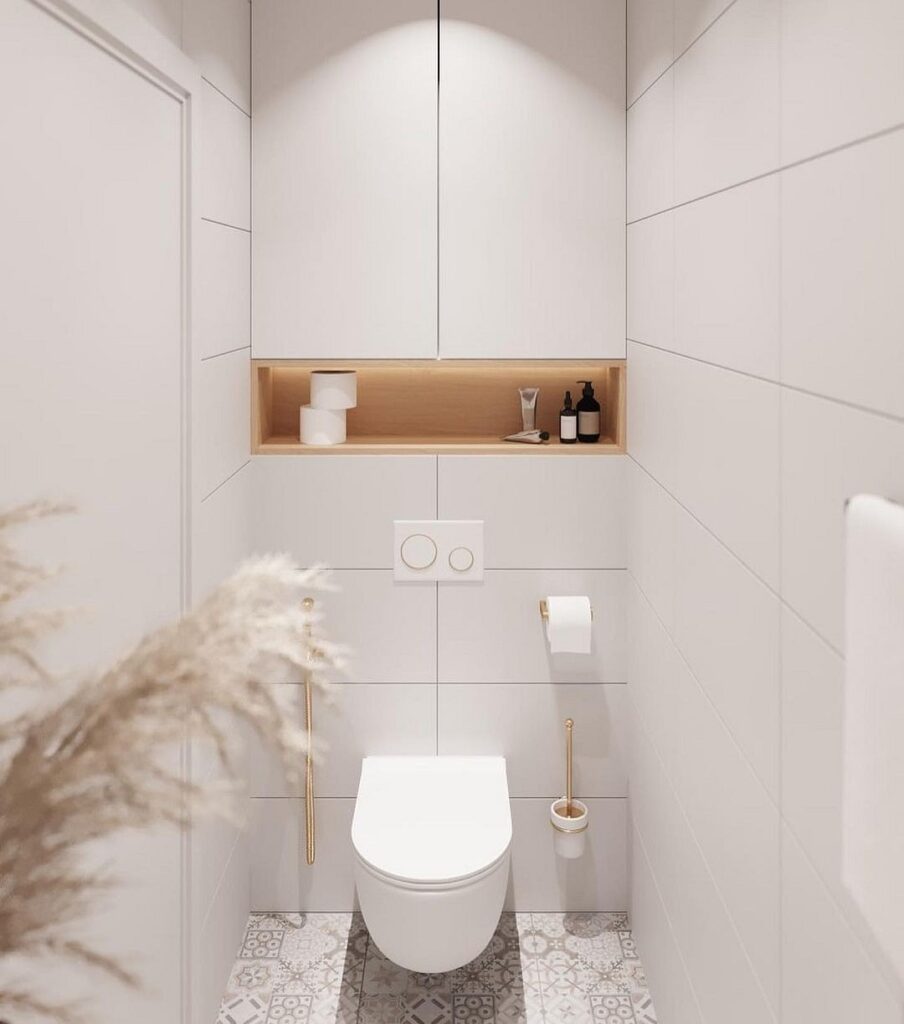
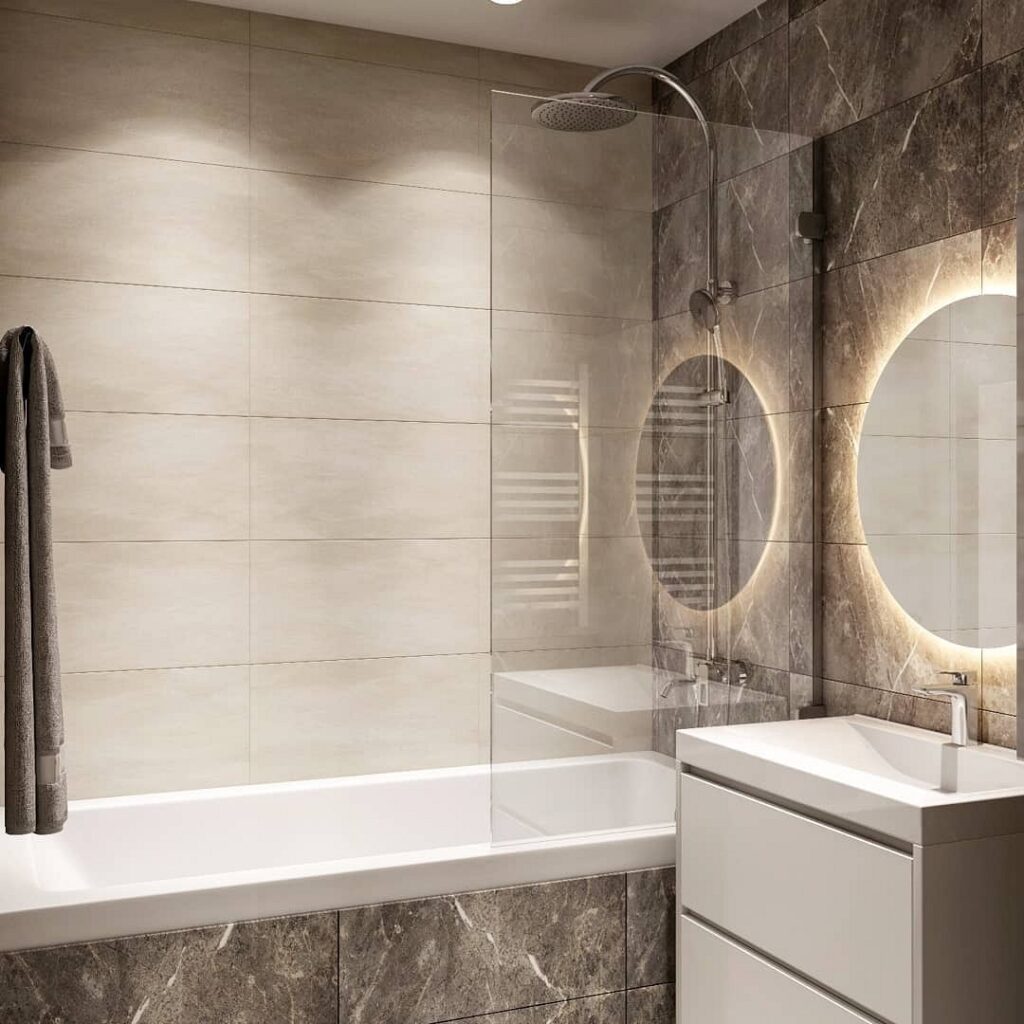
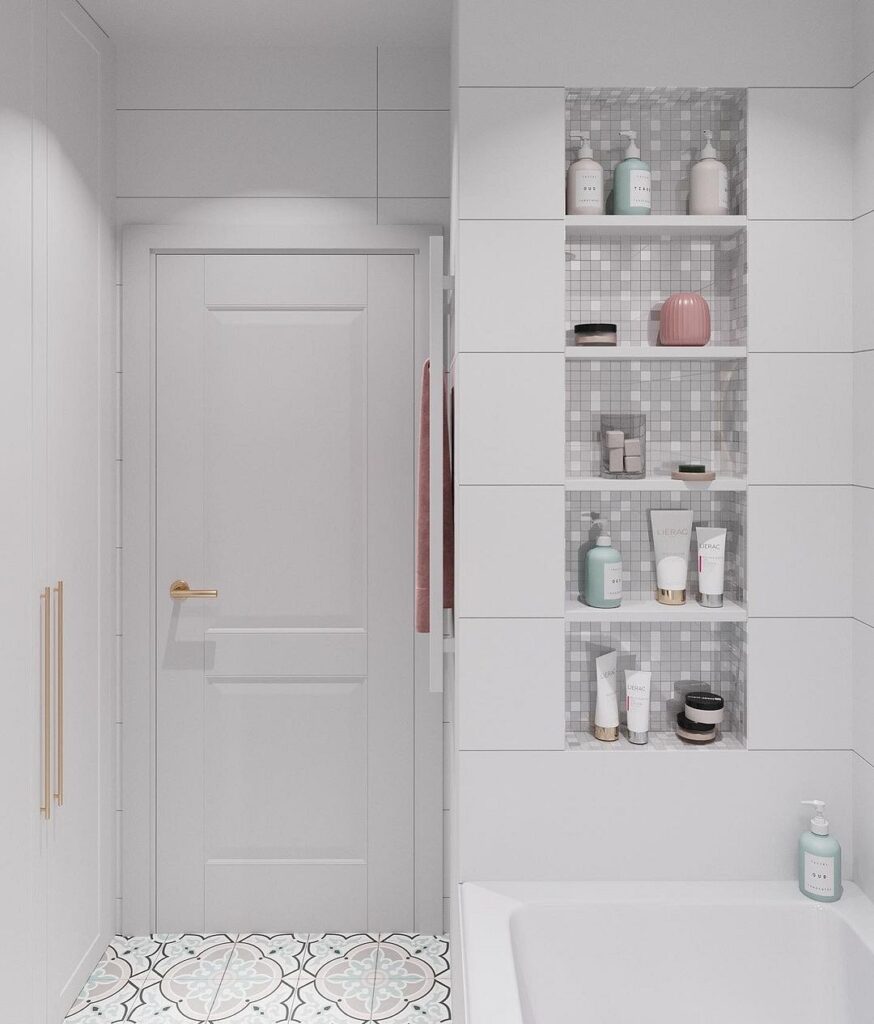
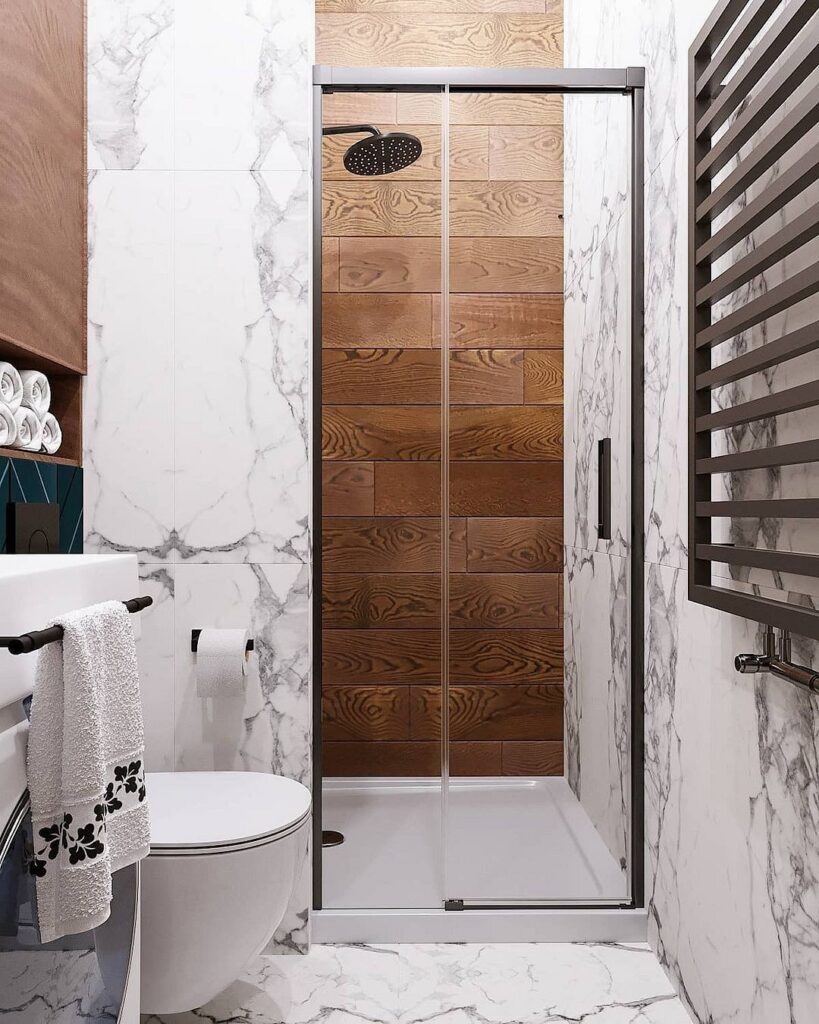
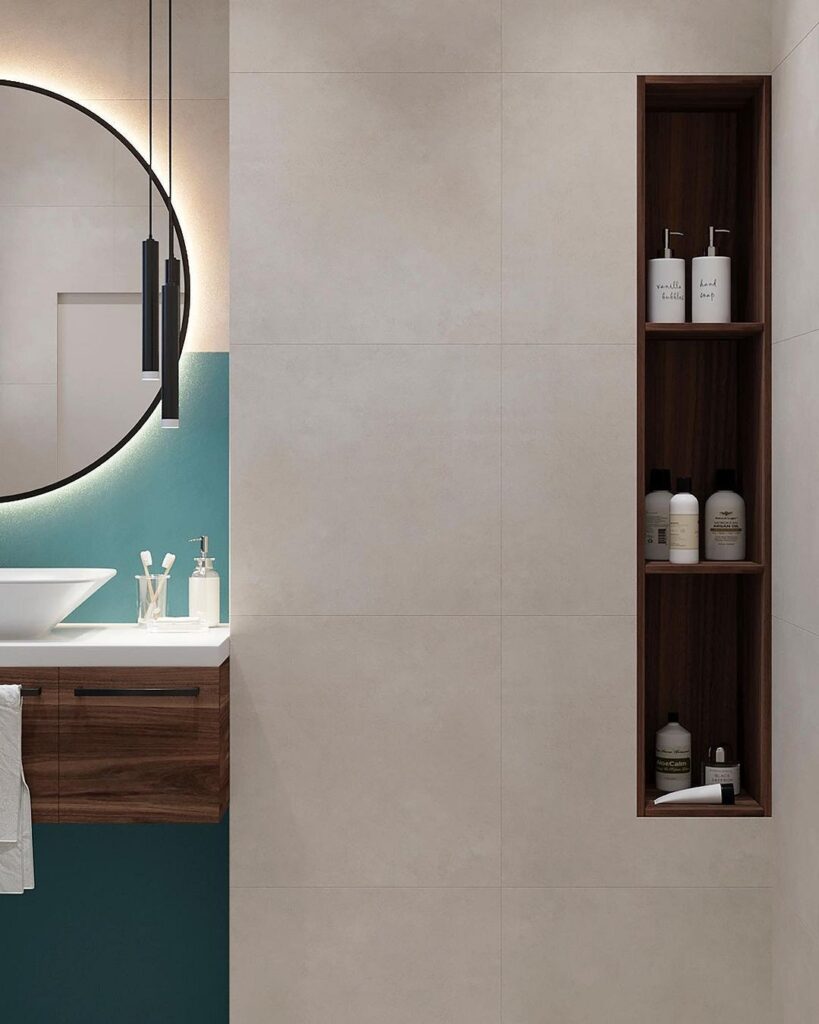
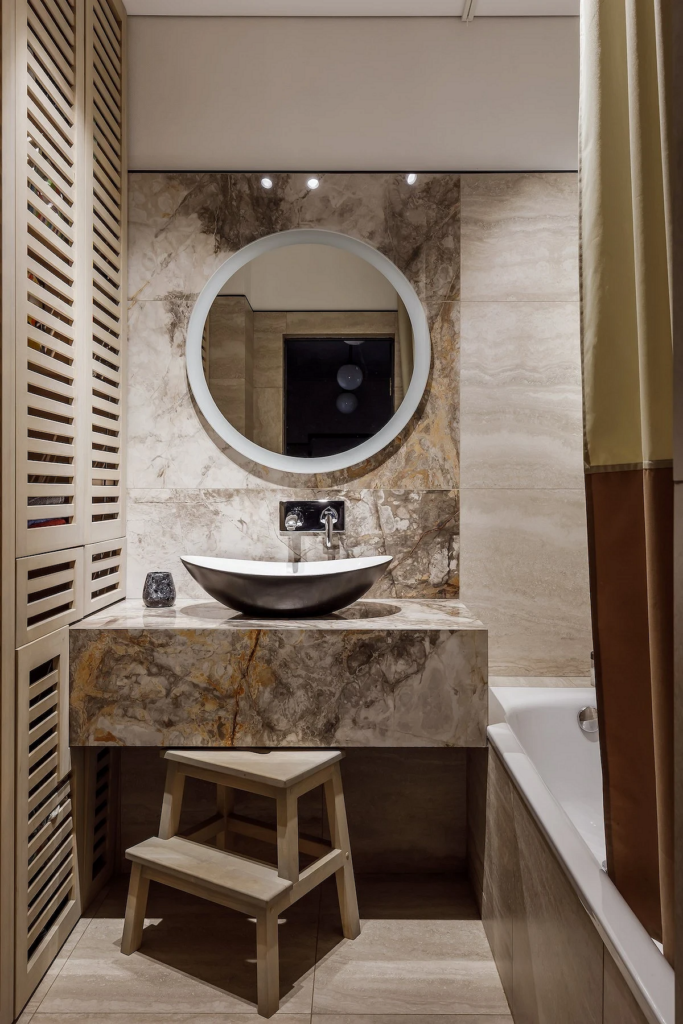
Vertical
To visually “stretch” the room upwards and make the ceiling appear higher, vertical tile installation can help. It’s not necessary to tile the entire perimeter this way—you can create accents or vertically tile only part of the walls.
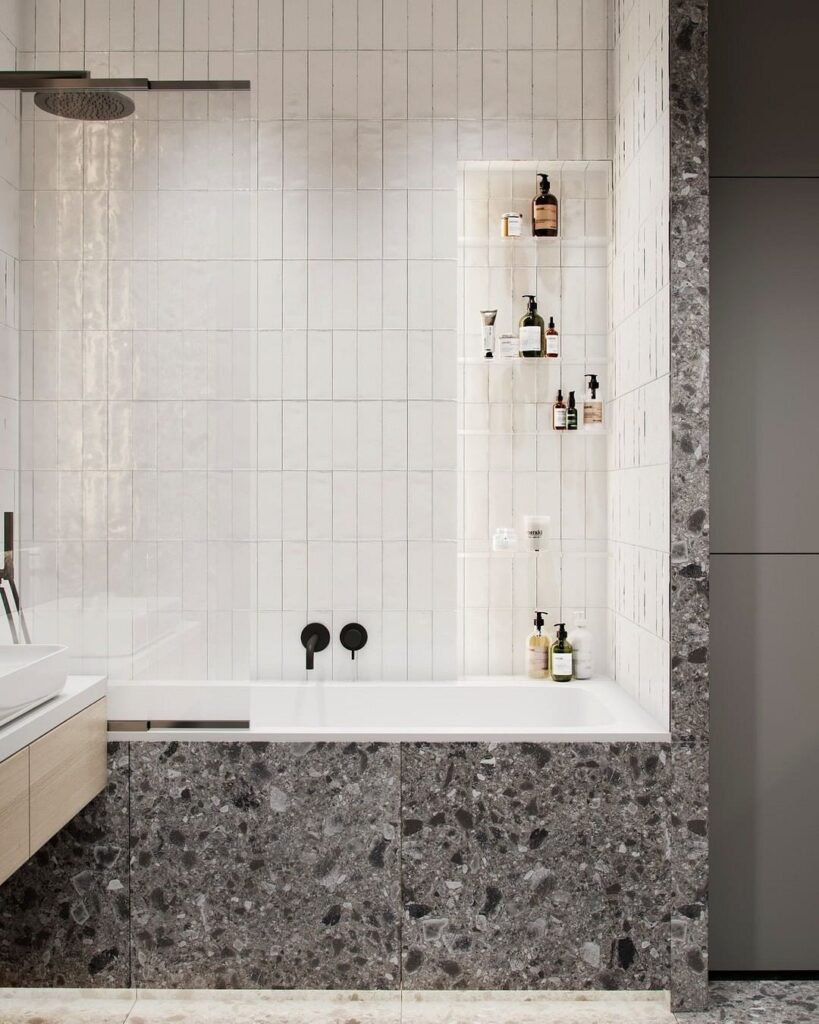
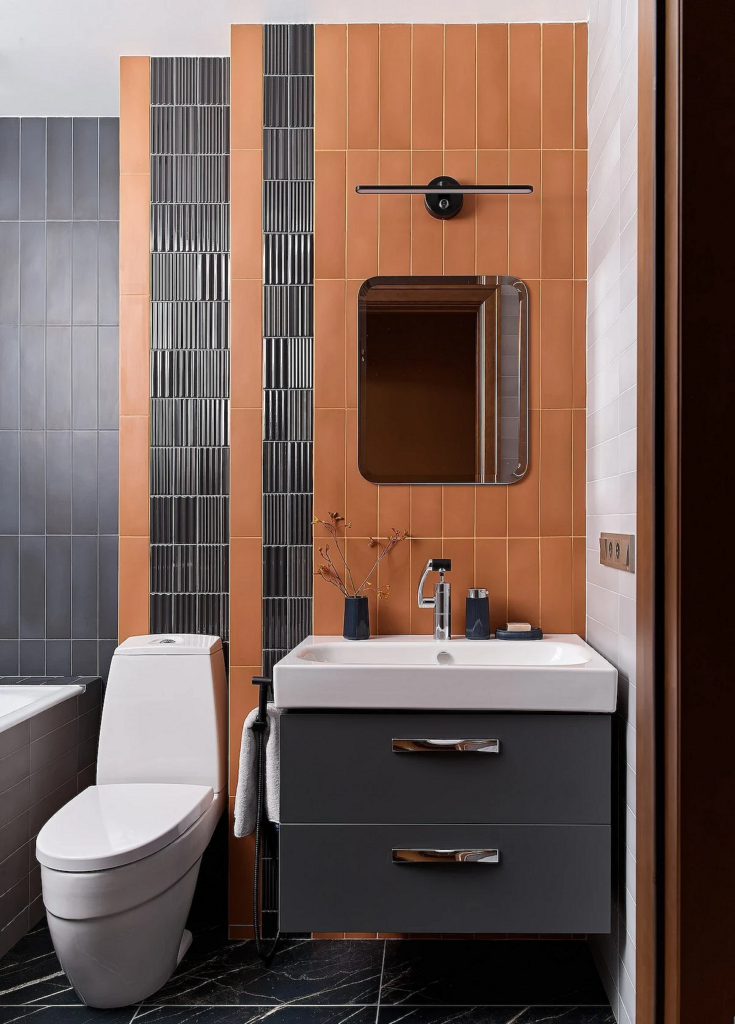
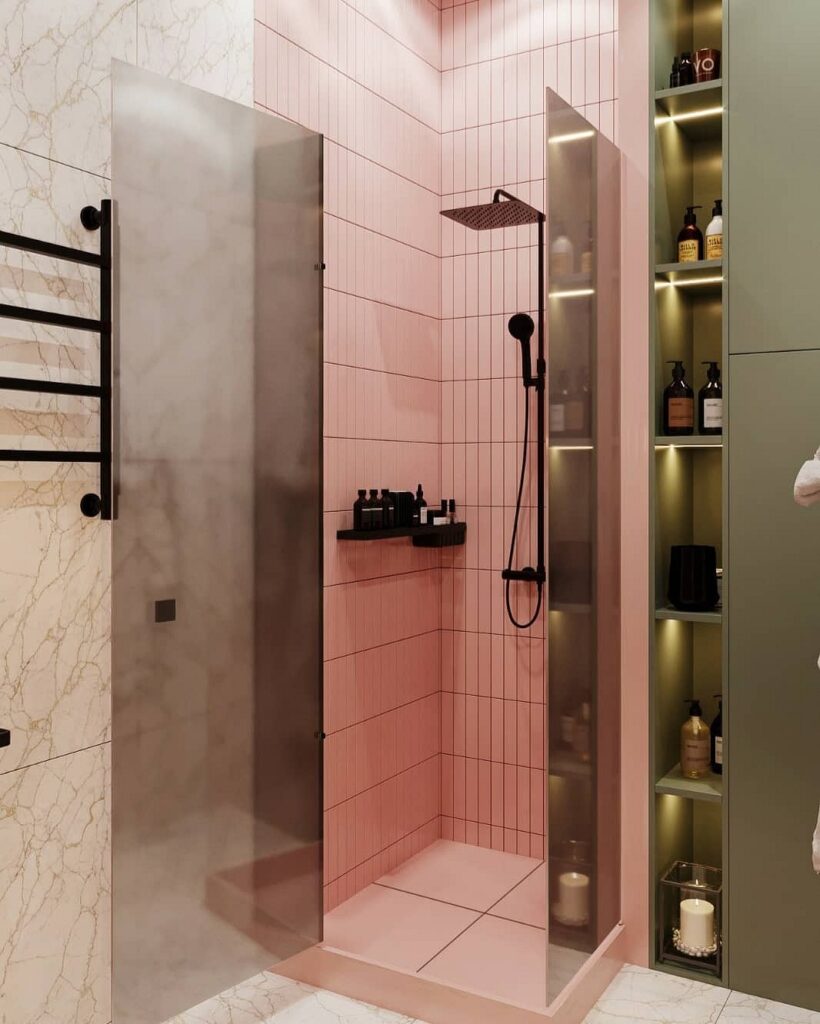
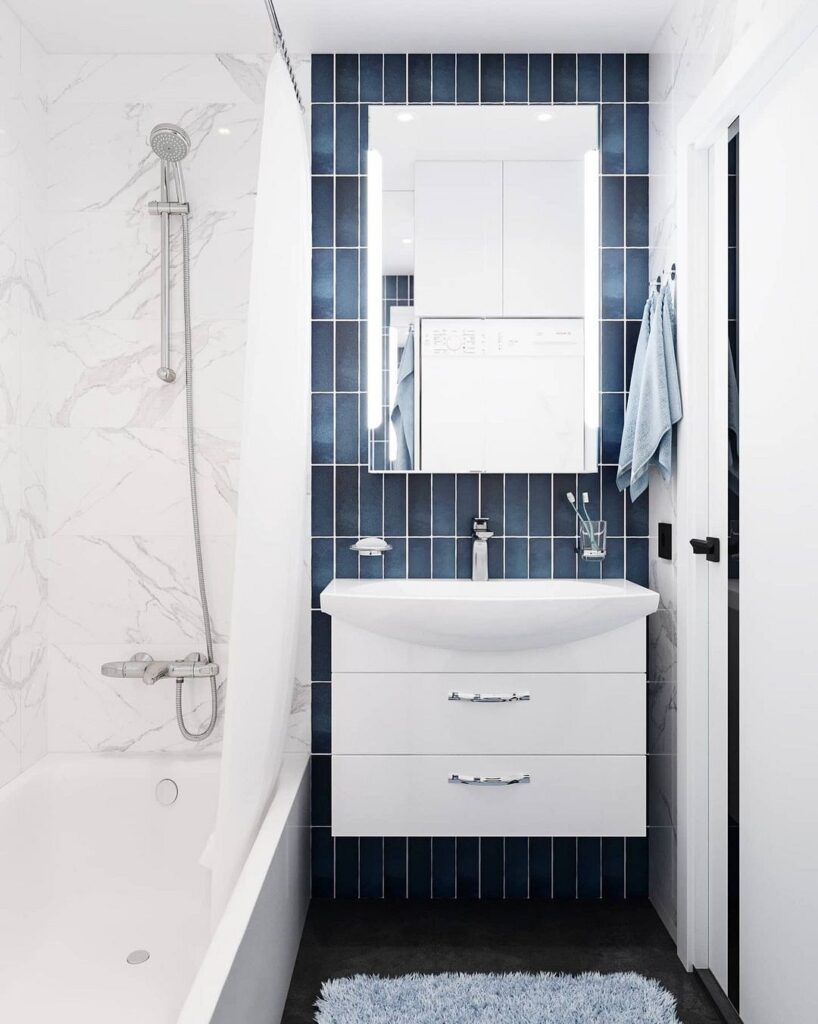
Unconventional
Diagonal, herringbone, or staggered layouts add depth to the room and overall enliven the interior. Diagonal layouts are often used for floors, while herringbone and staggered styles look interesting on bathroom and toilet walls. You can lay tiles this way in just one area, choosing a classic pattern or a different finishing material like paint for the other walls.

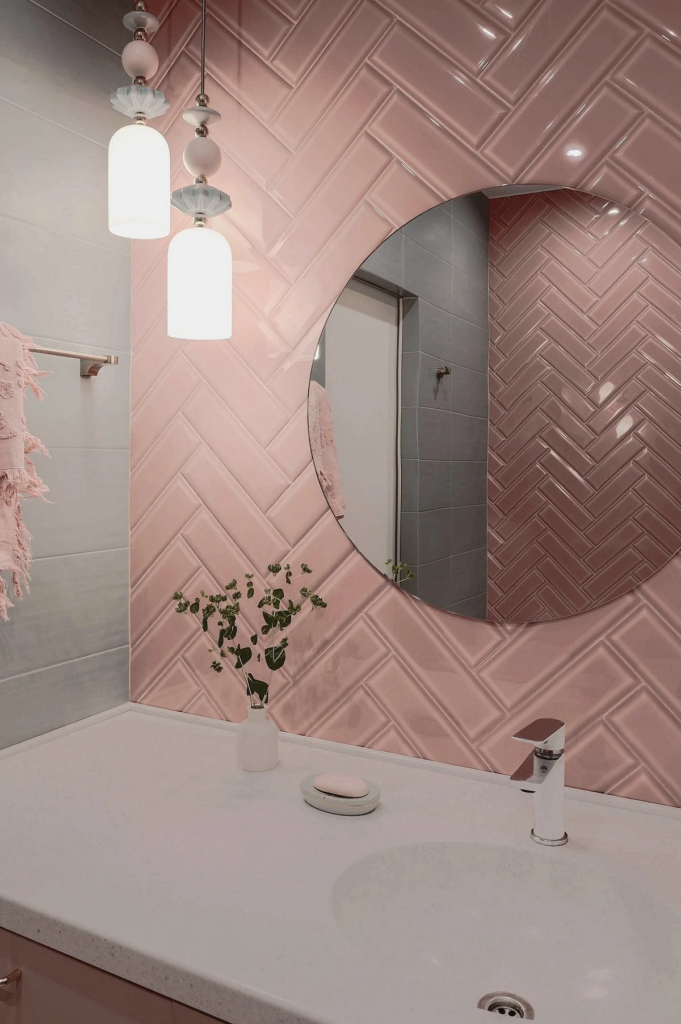
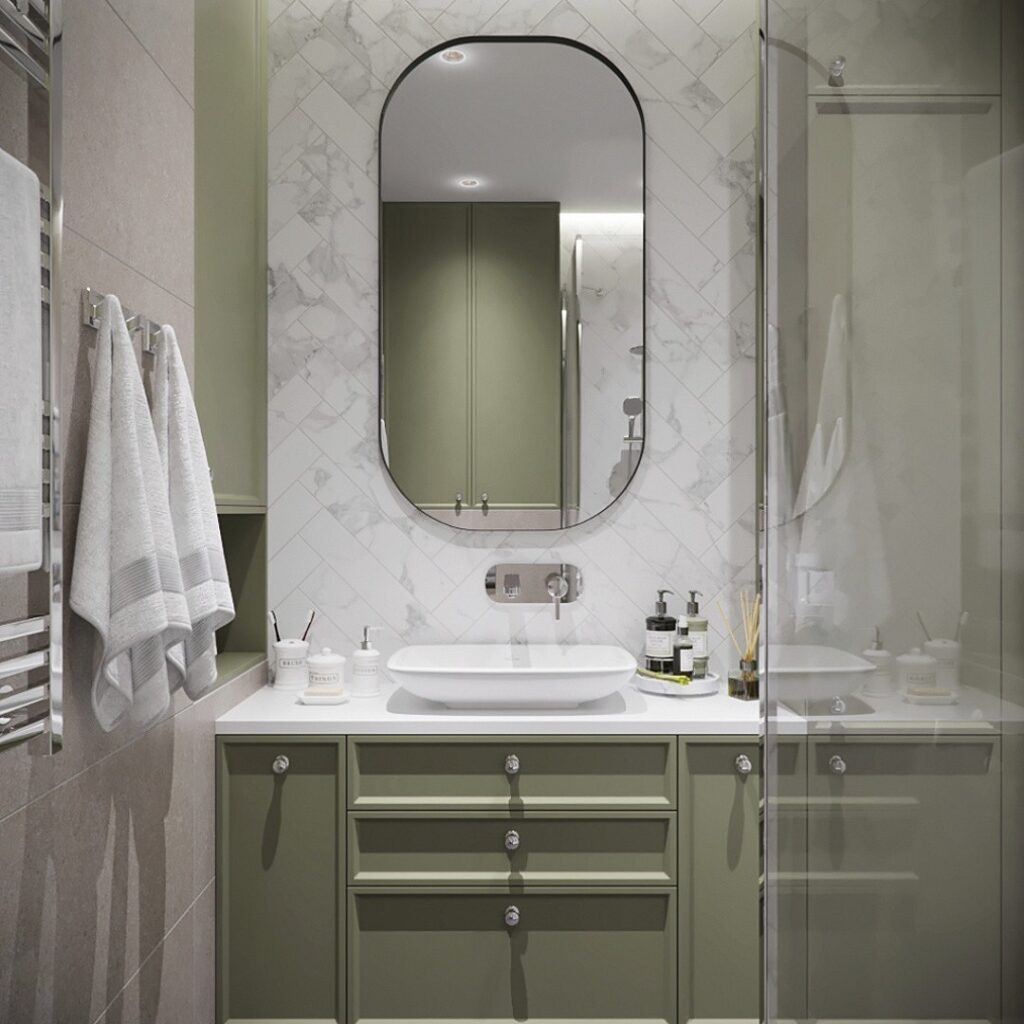
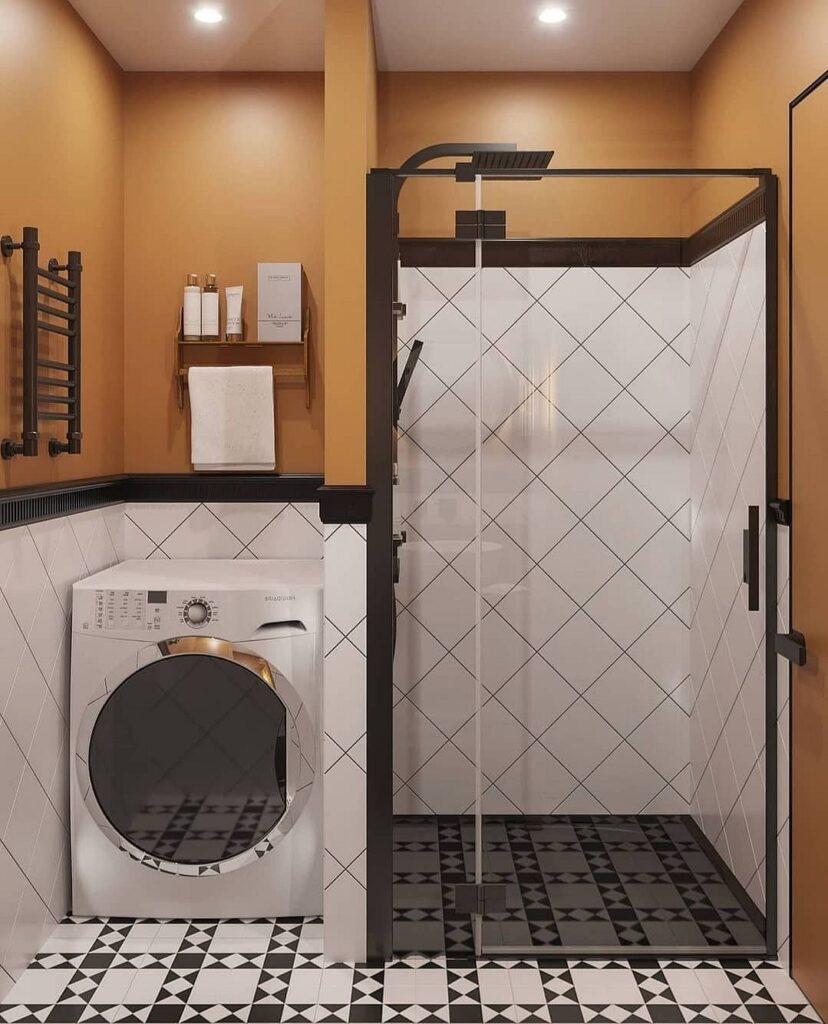

Tile Colors in Small Bathroom Designs
You have three color scheme options for a small bathroom: an entirely light interior, a dark palette, and bright accents.
Light
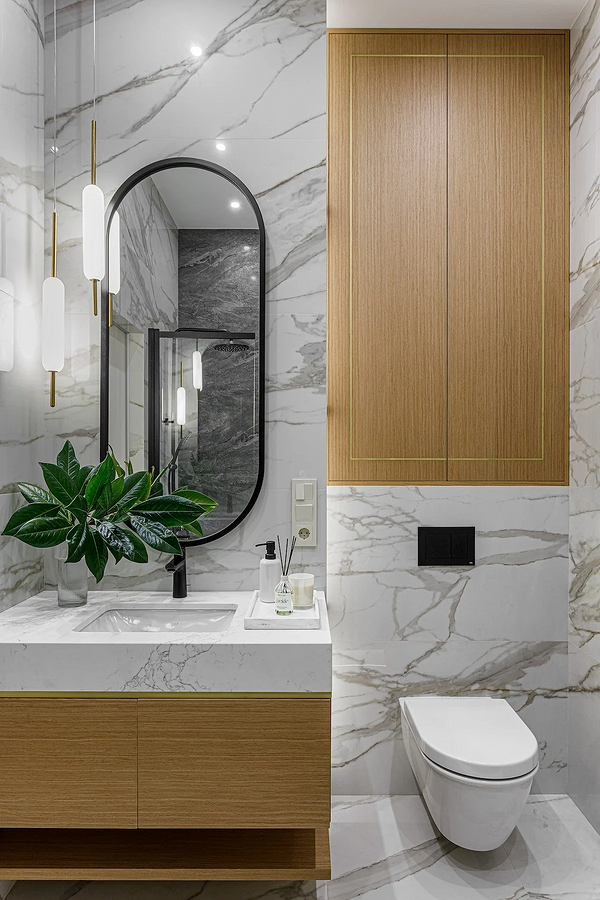
Light tones are the simplest way to make a space look visually larger and more open. Adding glossy surfaces, proper lighting, and strategic mirror placement can visually double the space.
You don’t need to stick to a sterile monochrome interior: you can play with different shades of the same color, add patterns or drawings, and create texture contrasts. For a contrast to light walls, you might choose a vibrant color or a bold pattern for the floor or ceiling.
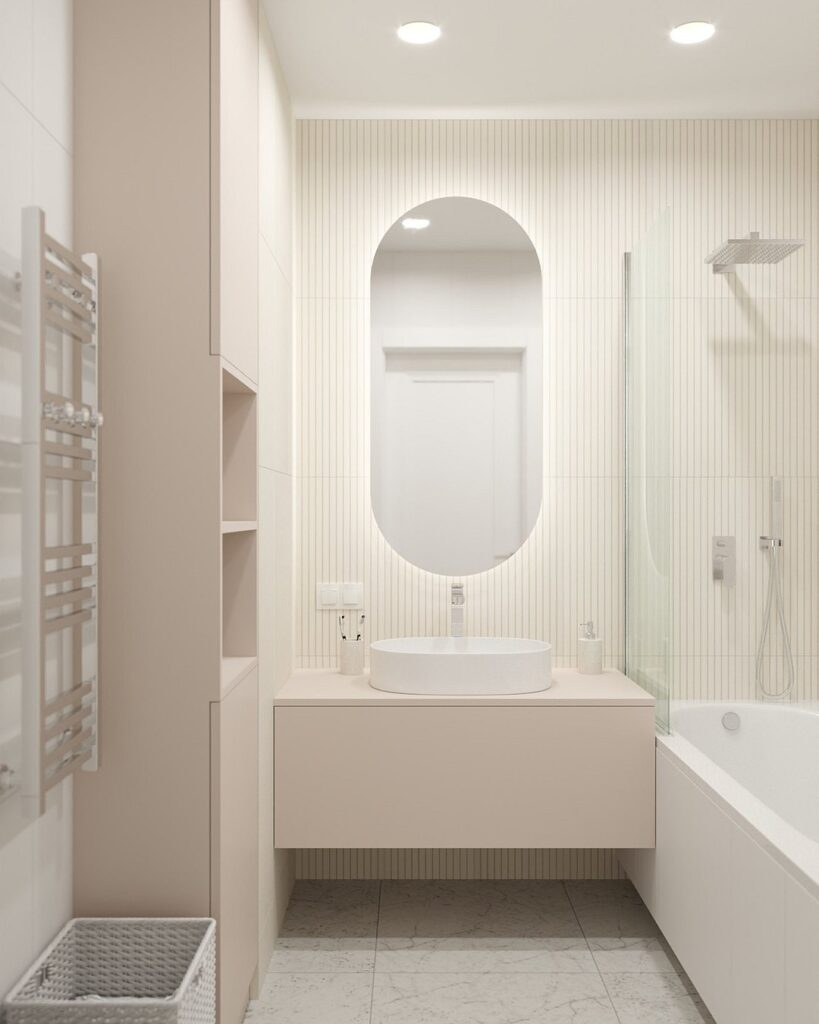
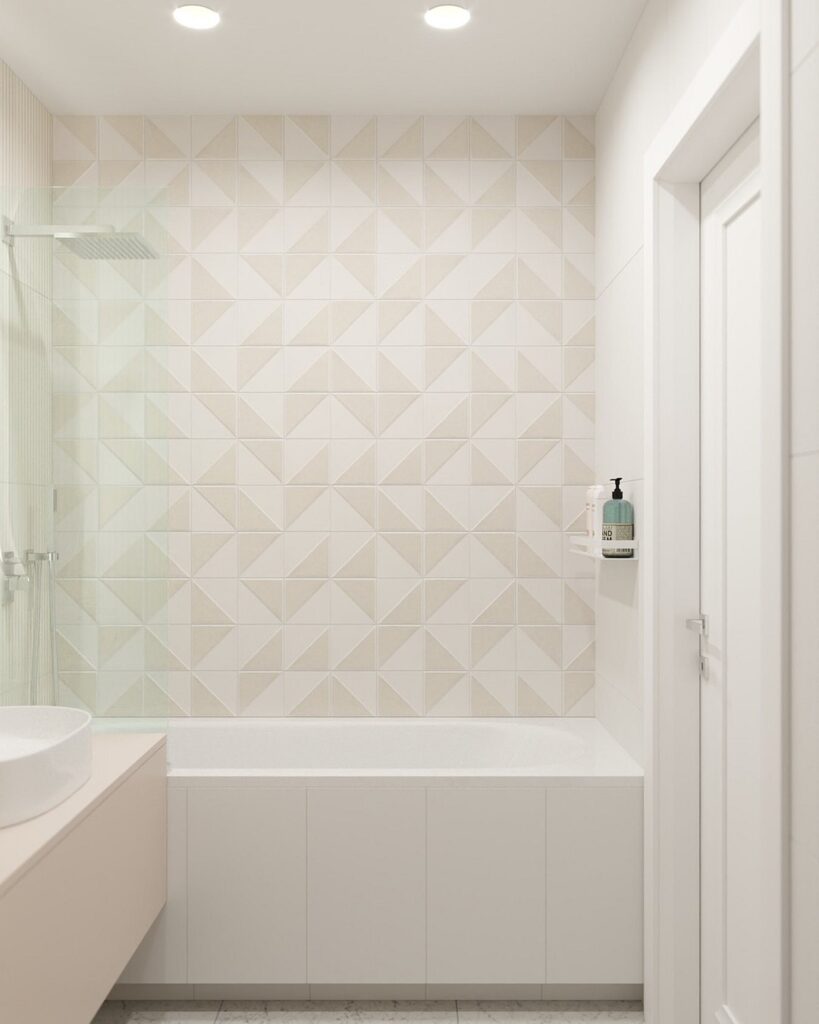
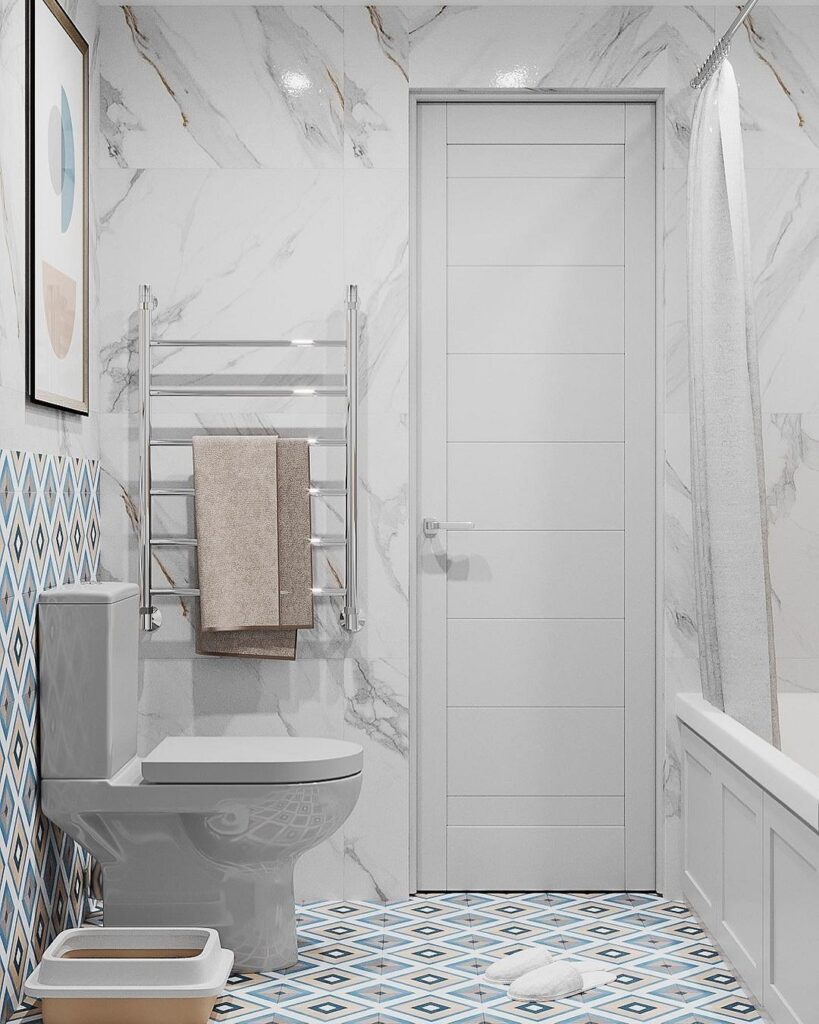
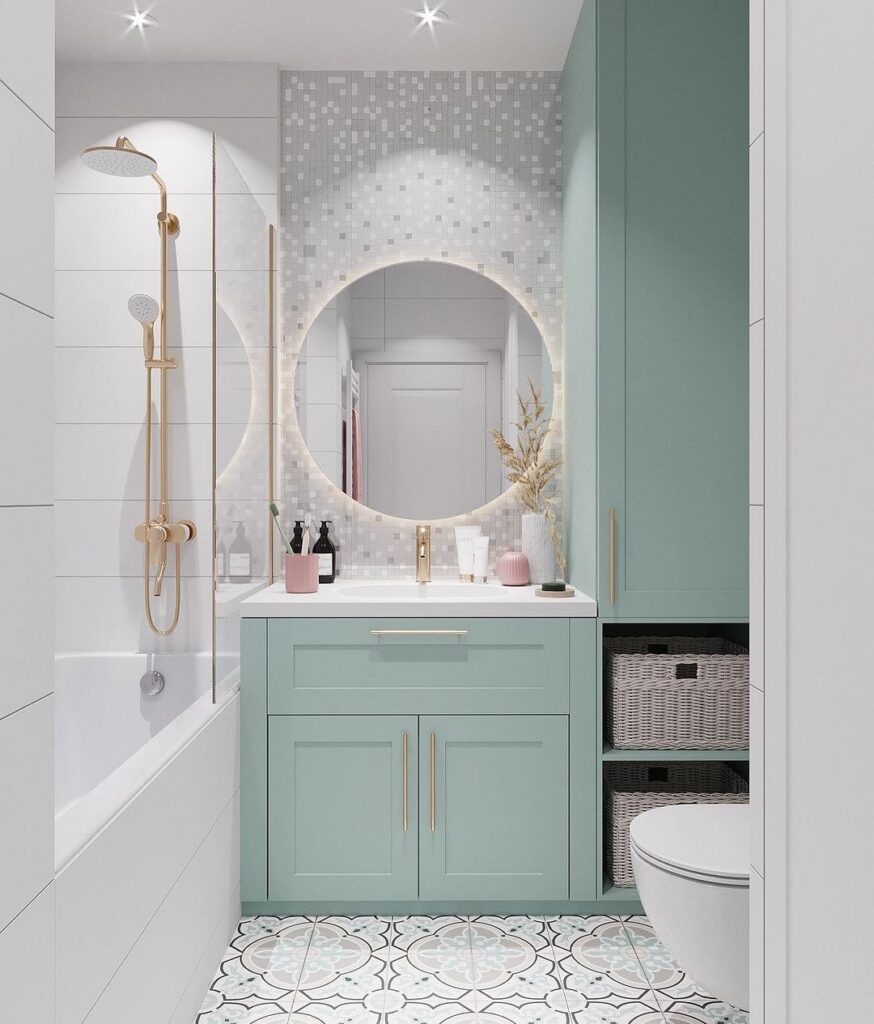
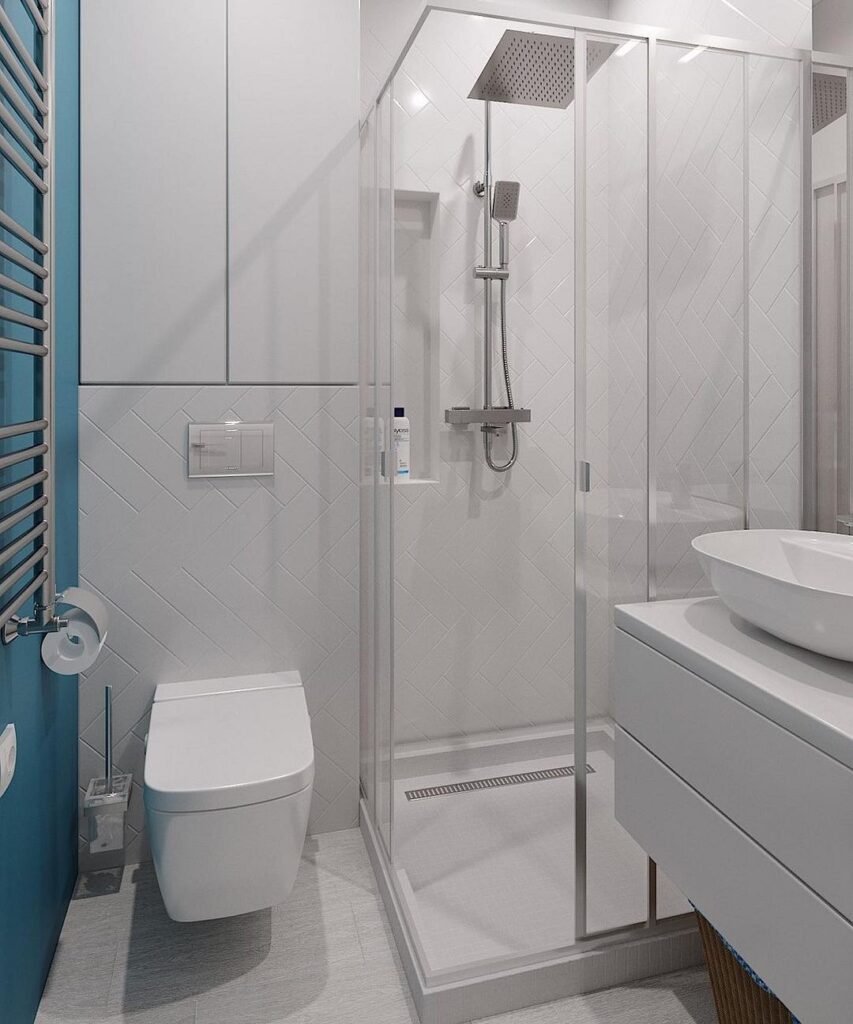
Classic bathroom colors include white, beige, light blue, and light gray. Avoiding monotony is possible by using subtle nuances — barely noticeable differences in shades of one color, texture, and size of the tiles. Even tiles from the same collection can look striking when combined. An interesting texture in light-colored finishes also works well, such as elegantly luxurious porcelain tiles resembling marble.
Classic bathroom colors include white, beige, light blue, and light gray. Avoiding monotony is possible by using subtle nuances — barely noticeable differences in shades of one color, texture, and size of the tiles. Even tiles from the same collection can look striking when combined. An interesting texture in light-colored finishes also works well, such as elegantly luxurious porcelain tiles resembling marble.
Dark
Many are skeptical about using dark colors in a small bathroom.
It’s thought that they steal away the already limited space, deprive the room of air, and are generally too gloomy. However, looking at photos of modern projects, you can see that designers often employ this bold technique.
Things to consider if you want to create an impressive dark bathroom:
- Use black and dark gray sparingly, as an accent.
- Dark tones look striking on tiles that mimic marble, stone, or concrete;
- To prevent the interior from being too gloomy, combine dark tiles with the cozy texture of wood or paint in deep, warm shades.
- Ensure good lighting is a must.

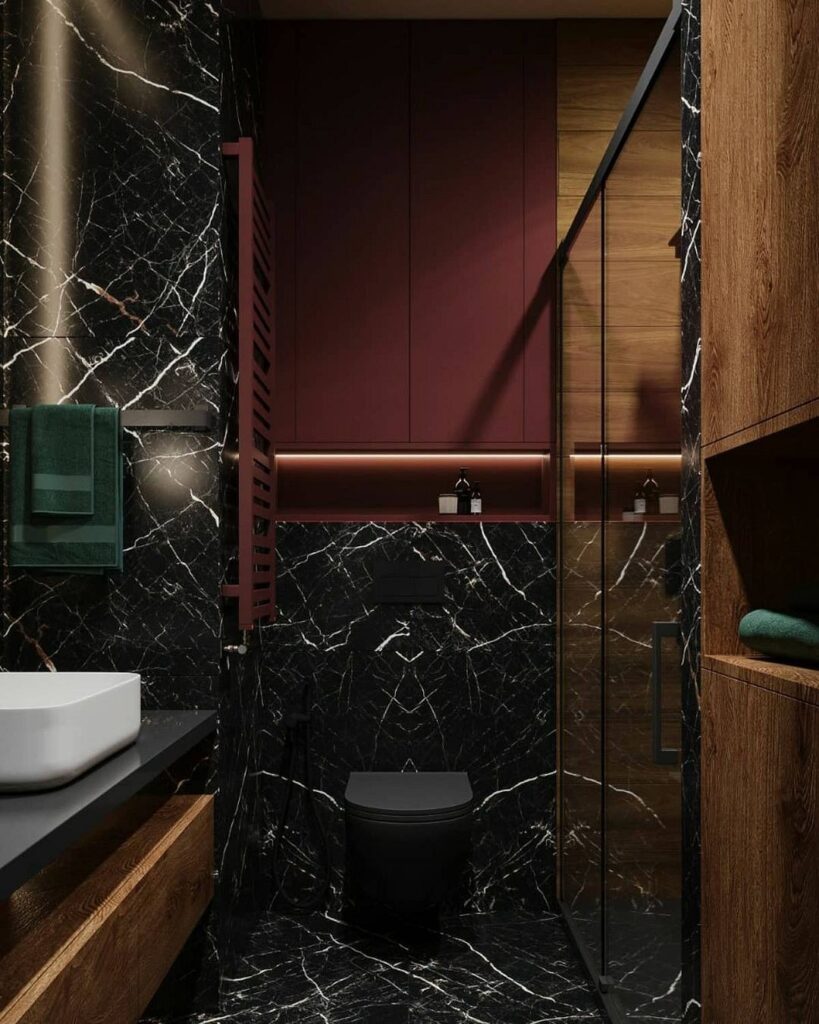
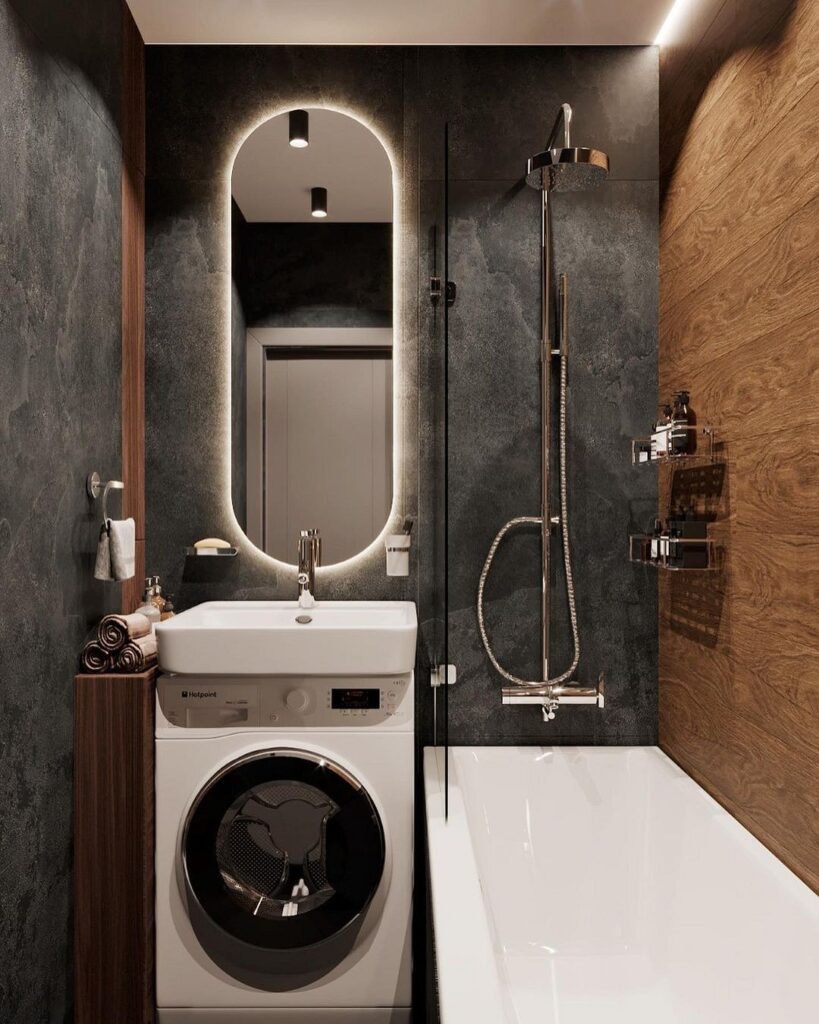
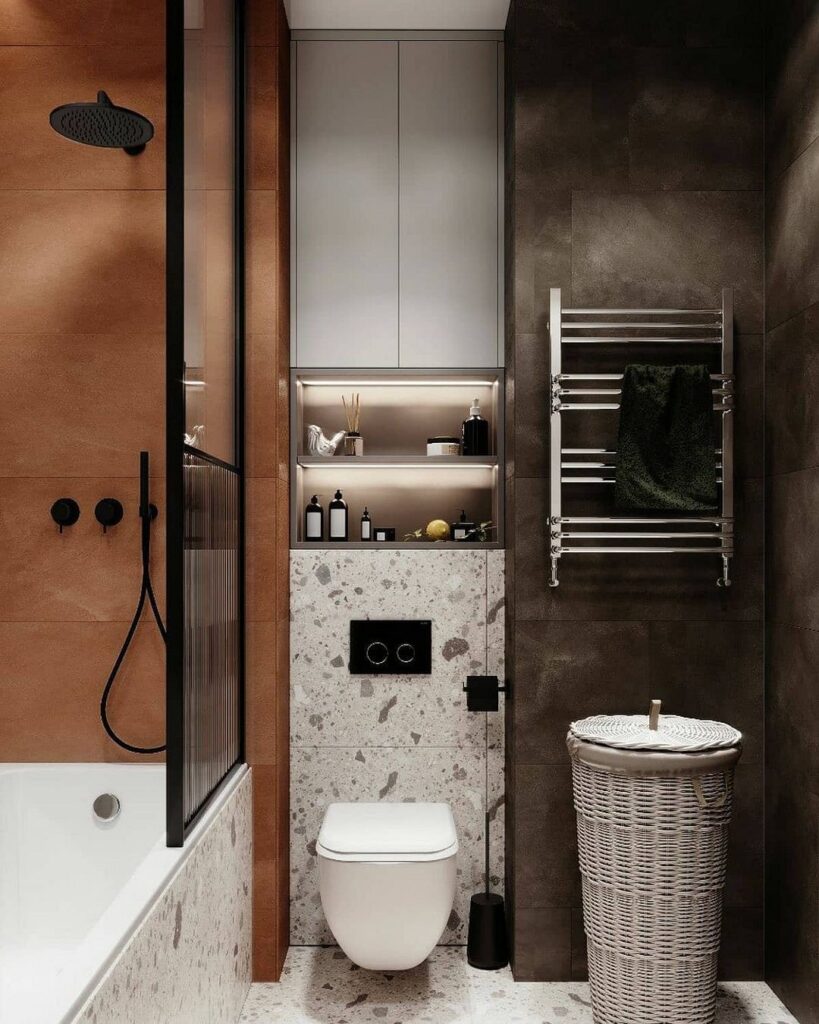

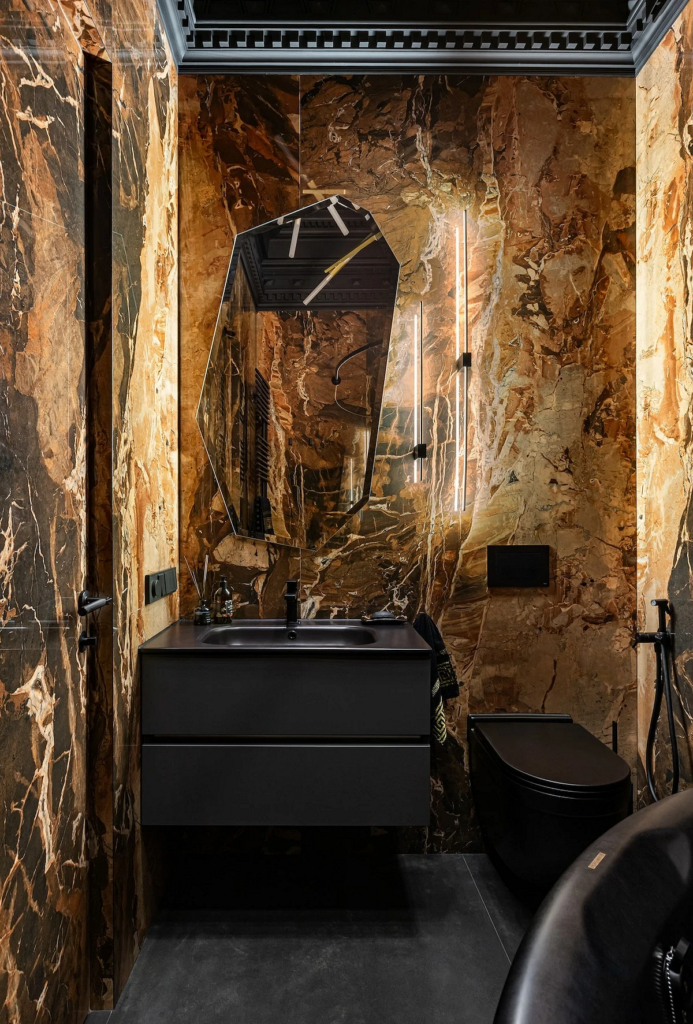
Bright
Choosing three or four squares of vivid colors and patterns will be excessive. It’s better to stick to one or two basic colors, and if you desire some brightness, add contrasting details.
A popular design feature is the accent wall, often behind the sink, in the shower area, or around the bathtub. You can highlight this area with a rich shade, contrasting pattern, or unique tiles—like hexagon, terrazzo, patchwork, or 3D imitation. The advantage of this approach is both aesthetic and practical: a bold element immediately draws attention and shifts the focus from the actual size of the bathroom. Below you see a photo of the tiling and design of a small bathroom with an accent tile.

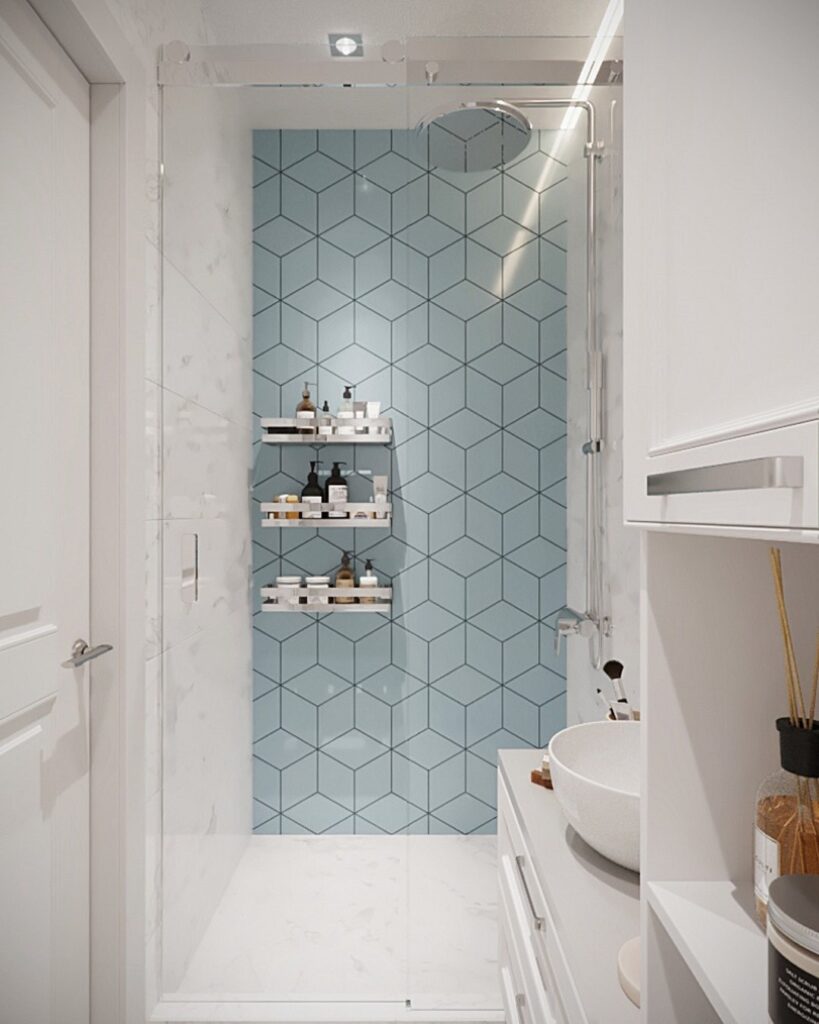
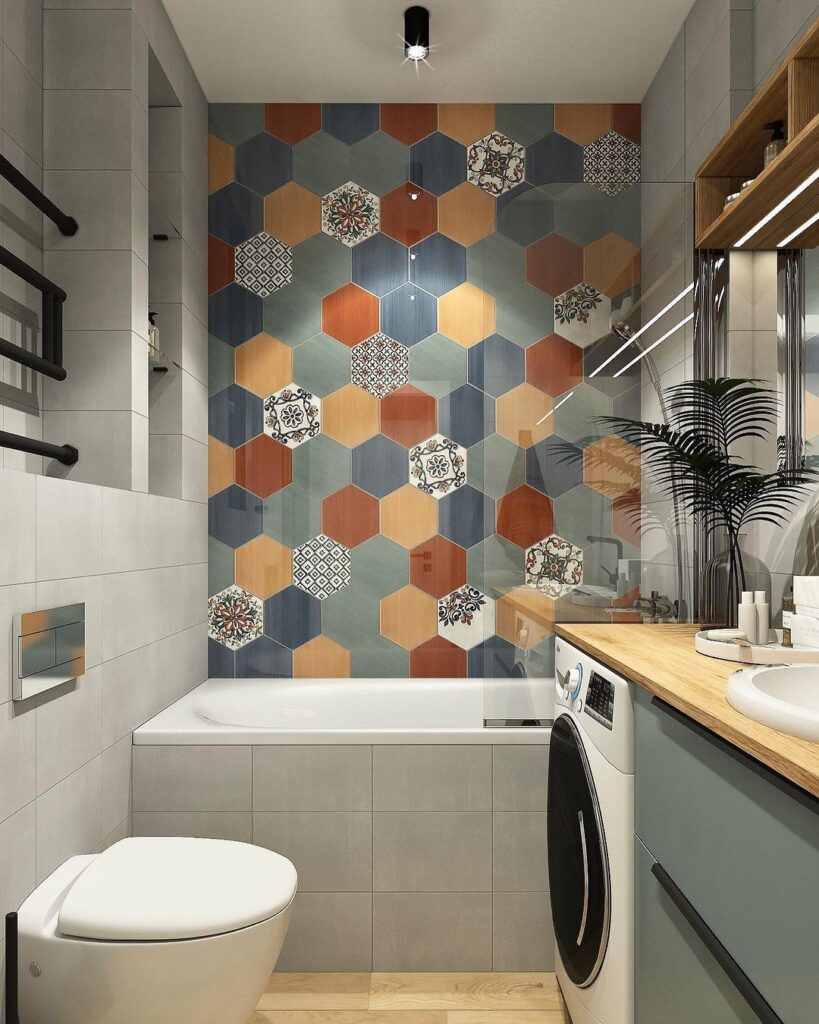
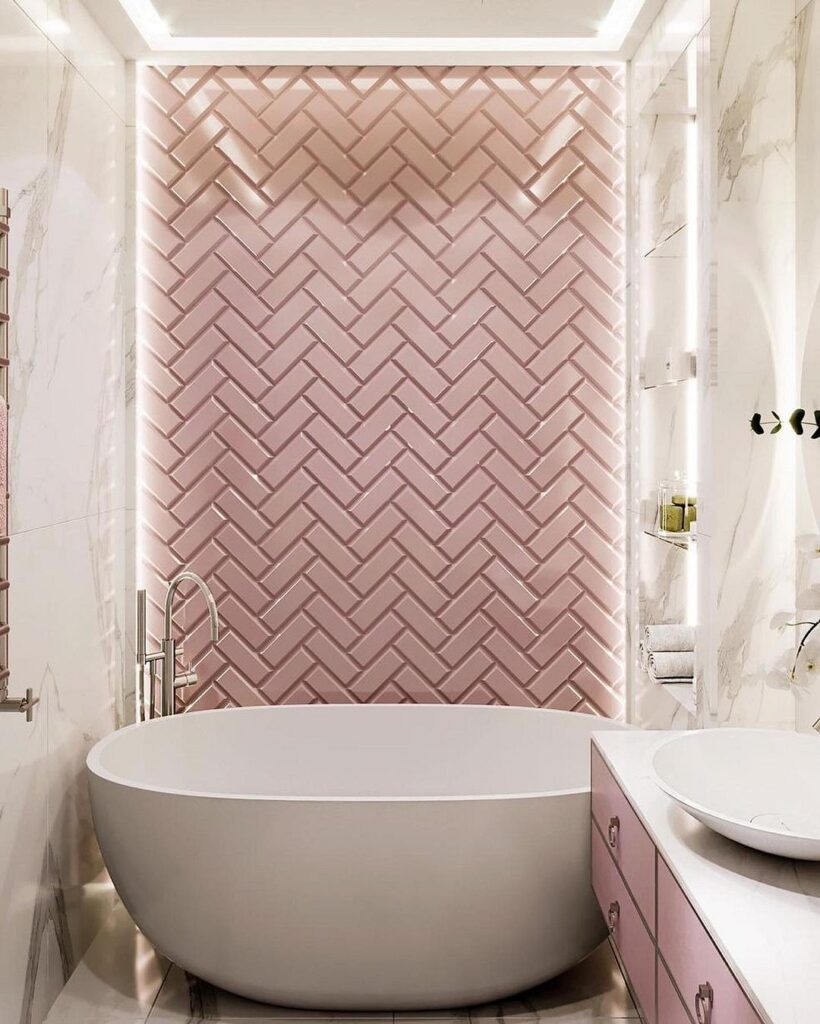
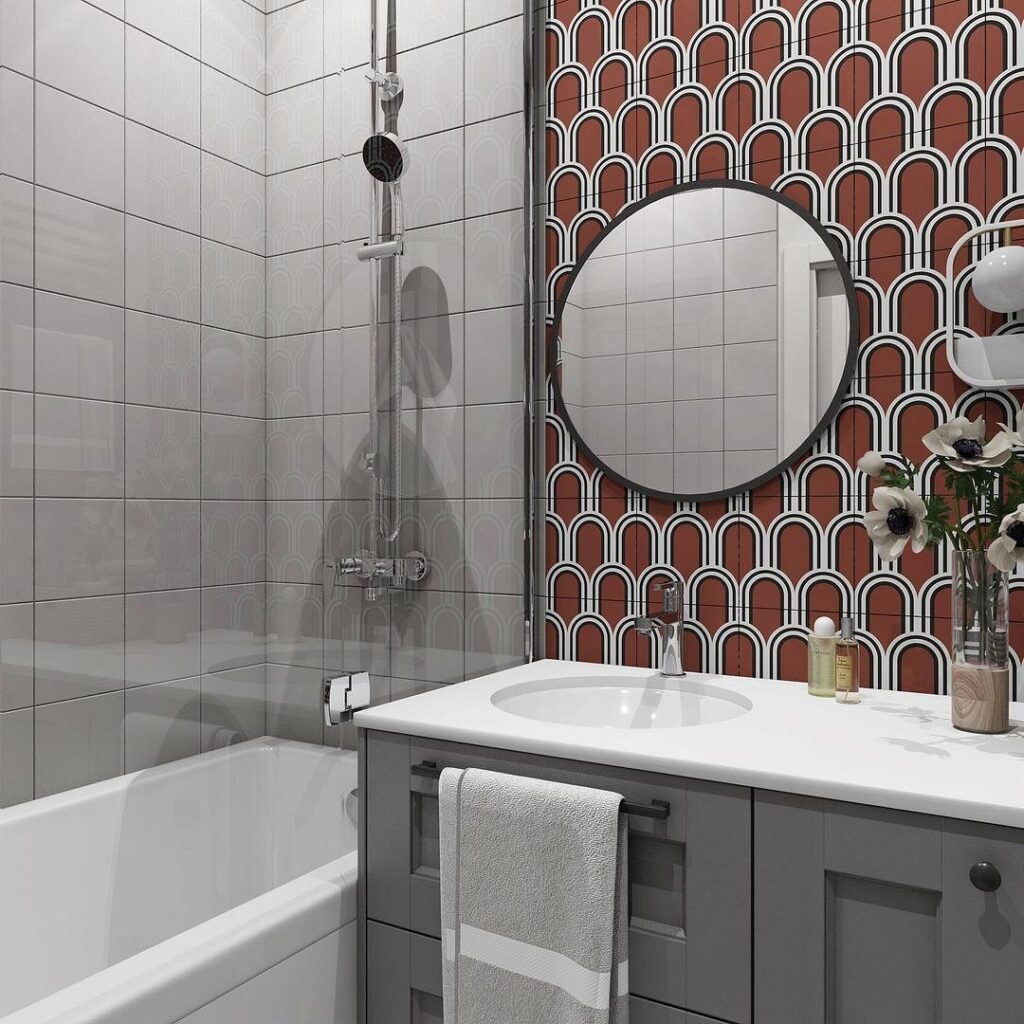
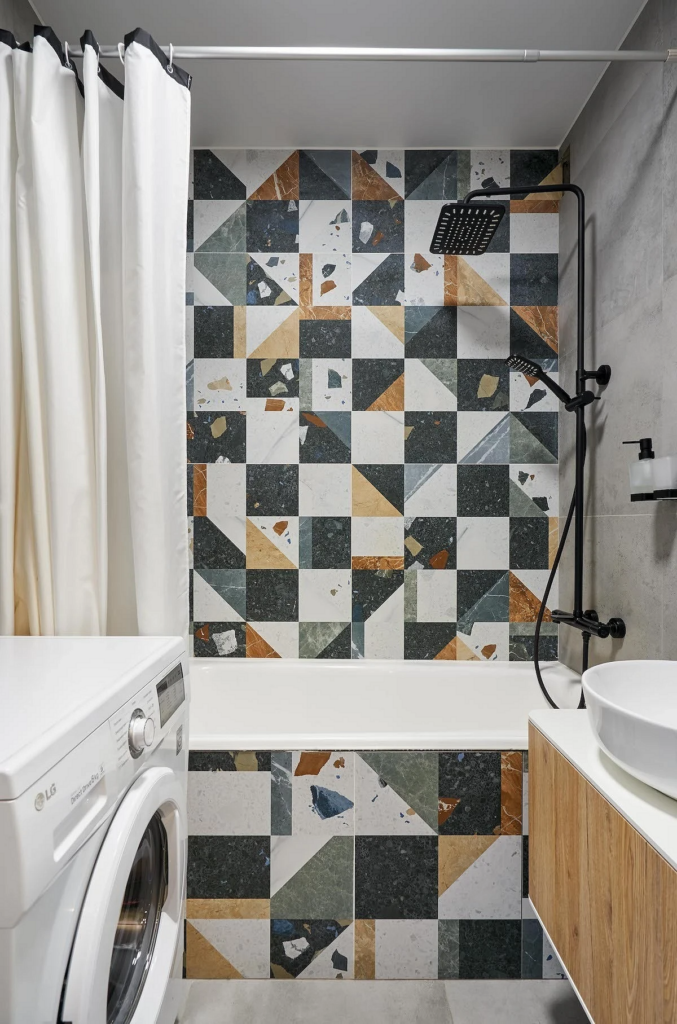
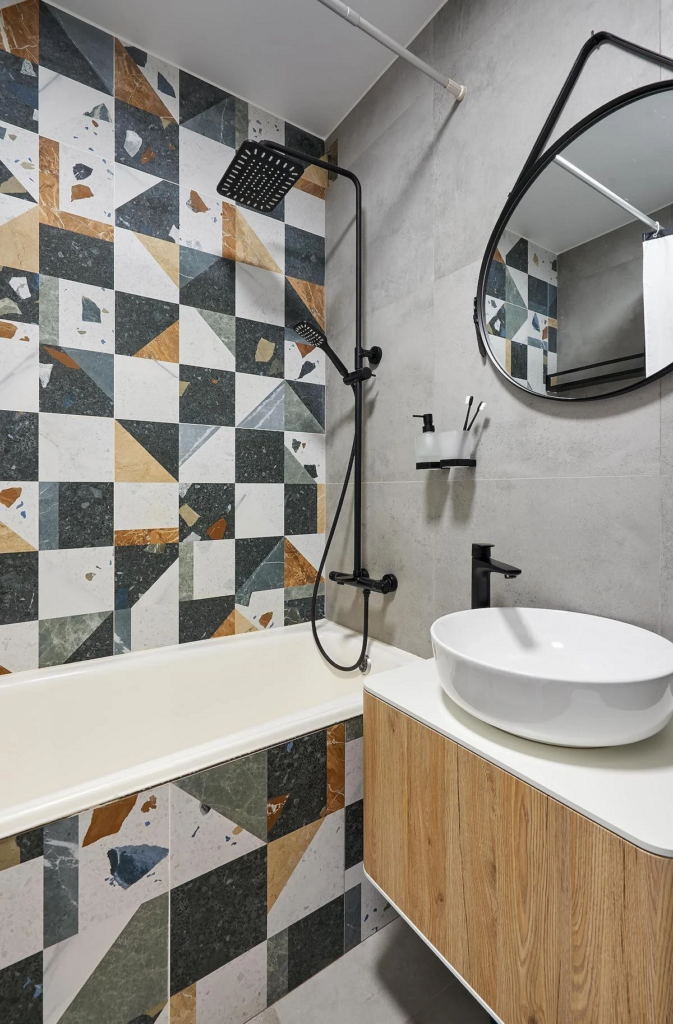
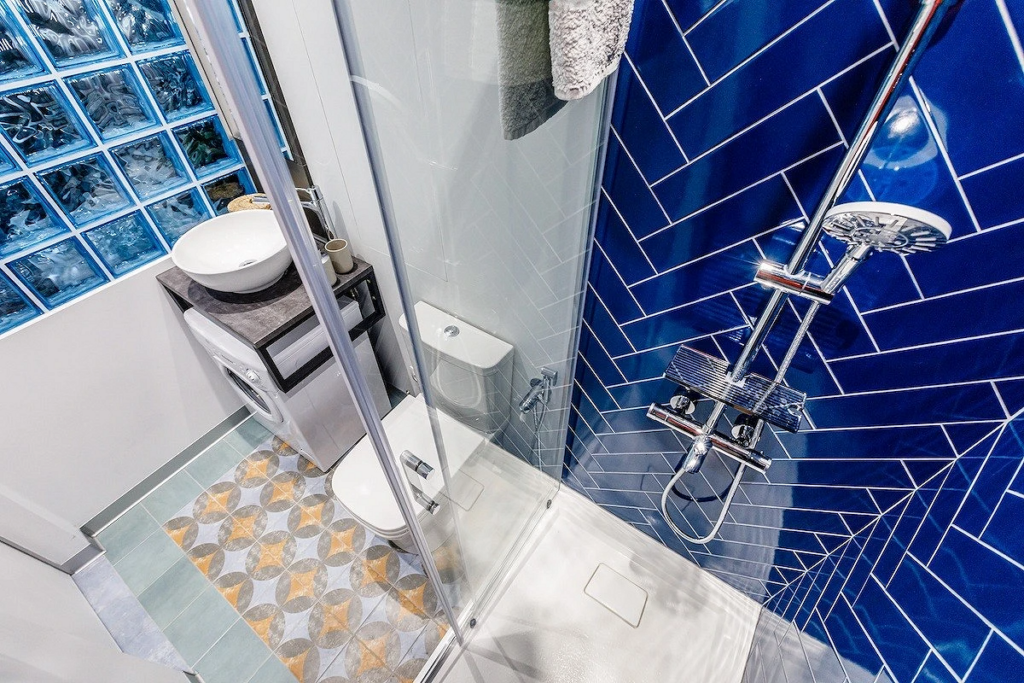
Texture and Relief
Beyond format, color, and installation method, the texture of ceramics also affects the visual perception of the interior.
The surface can be either smooth or ribbed— the former is more suitable for compact spaces. Designers often choose glossy surfaces for small restrooms because the reflections and shimmer make the room appear more spacious and airy. To avoid overdoing it, consider tiling just one or two walls. The only downside to gloss is that it shows fingerprints, stains, and smudges more easily.
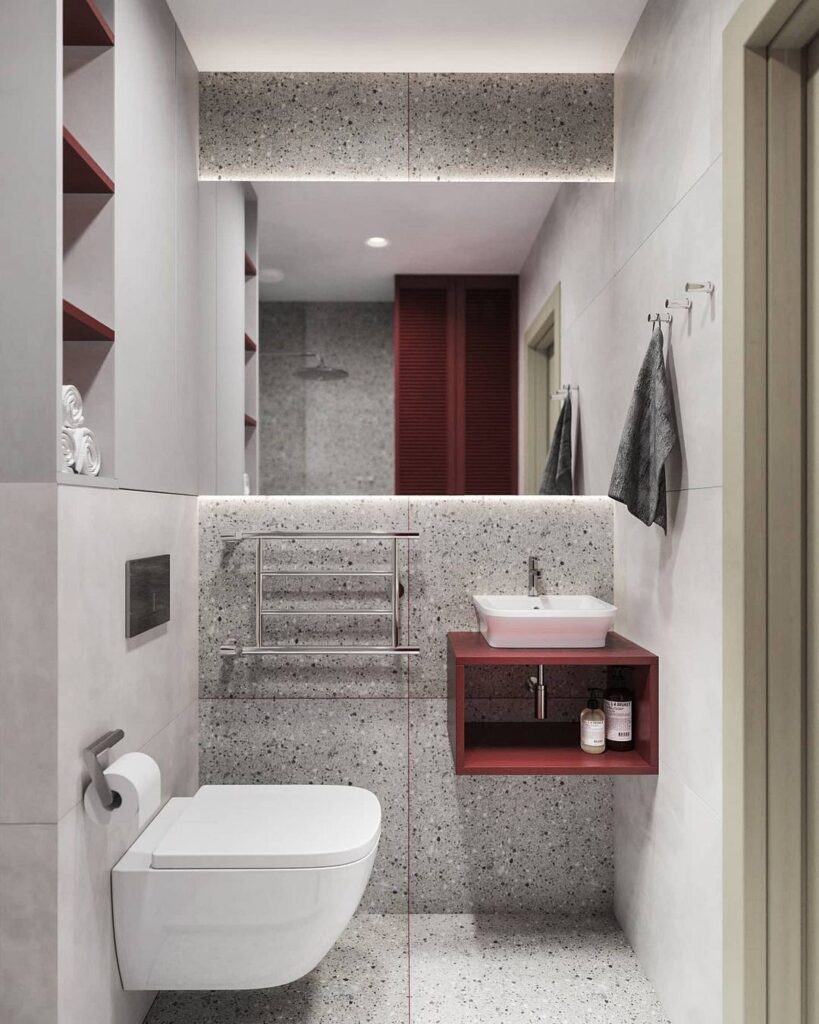
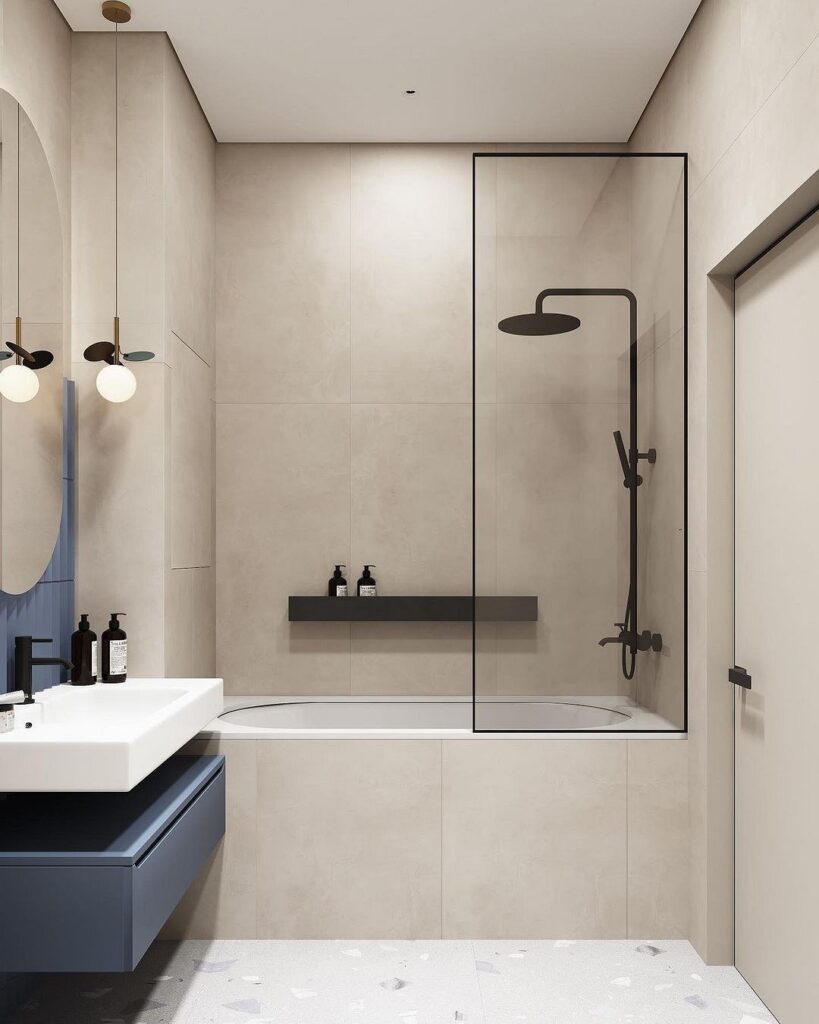
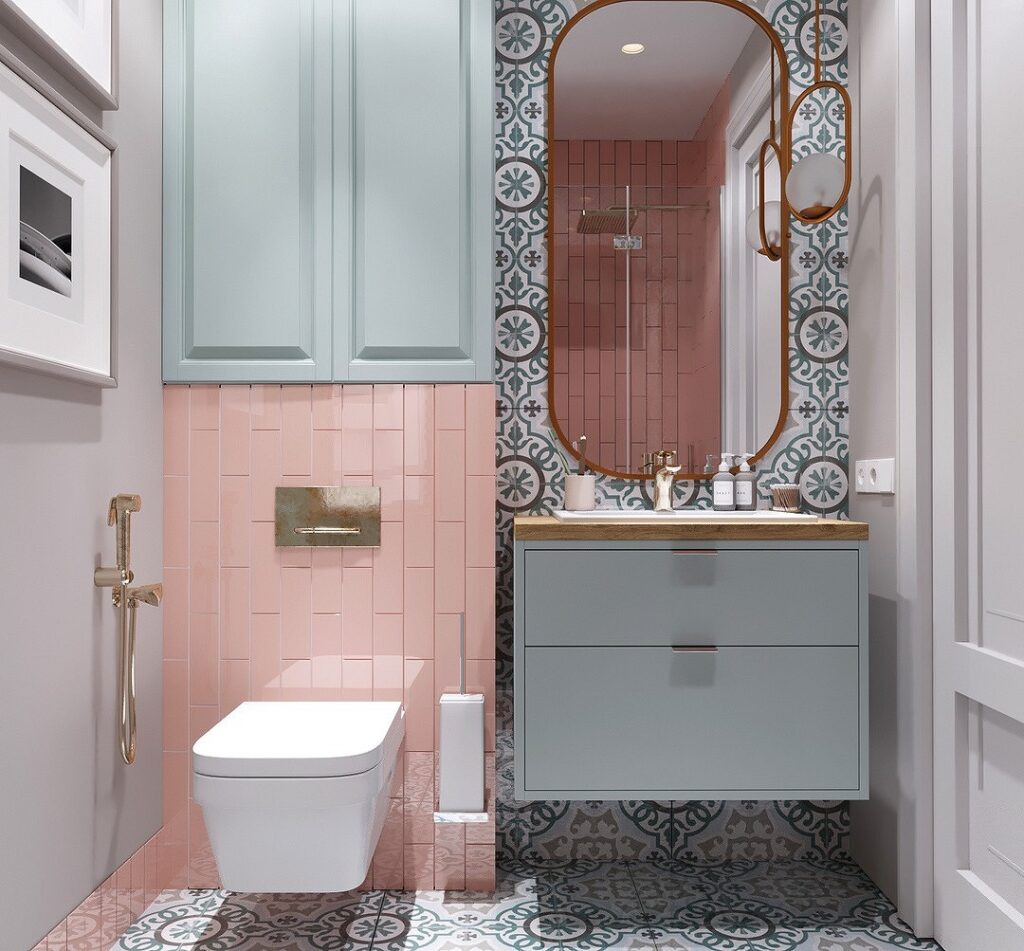
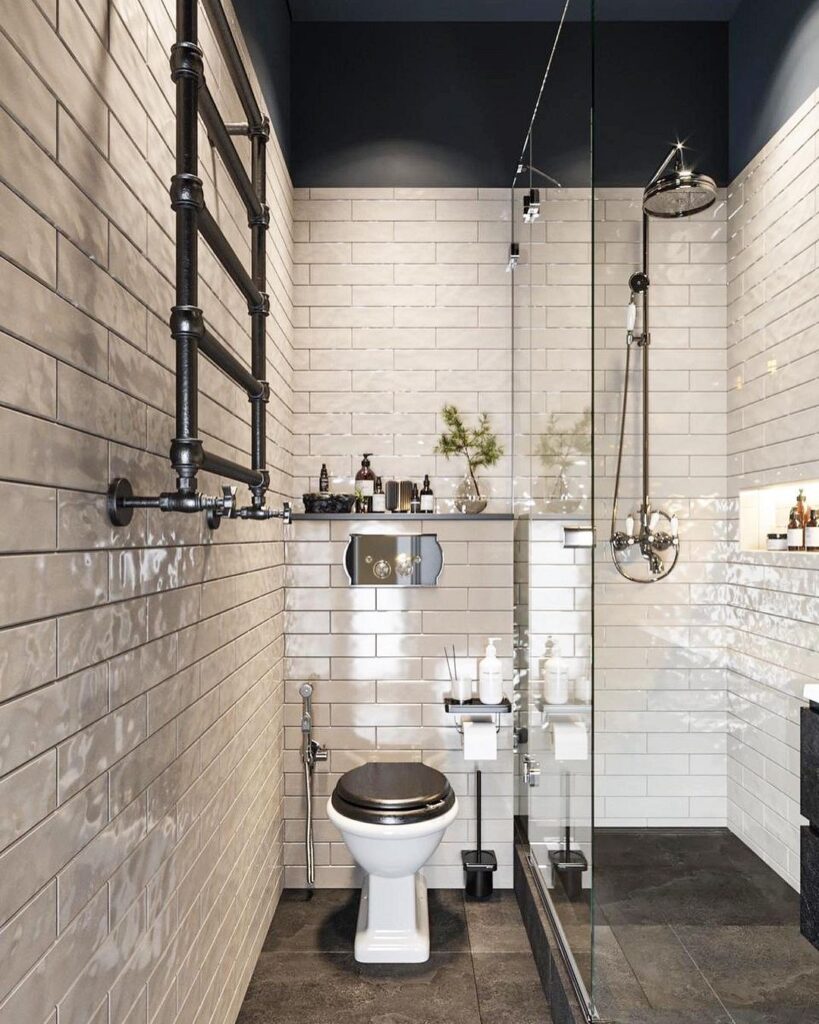
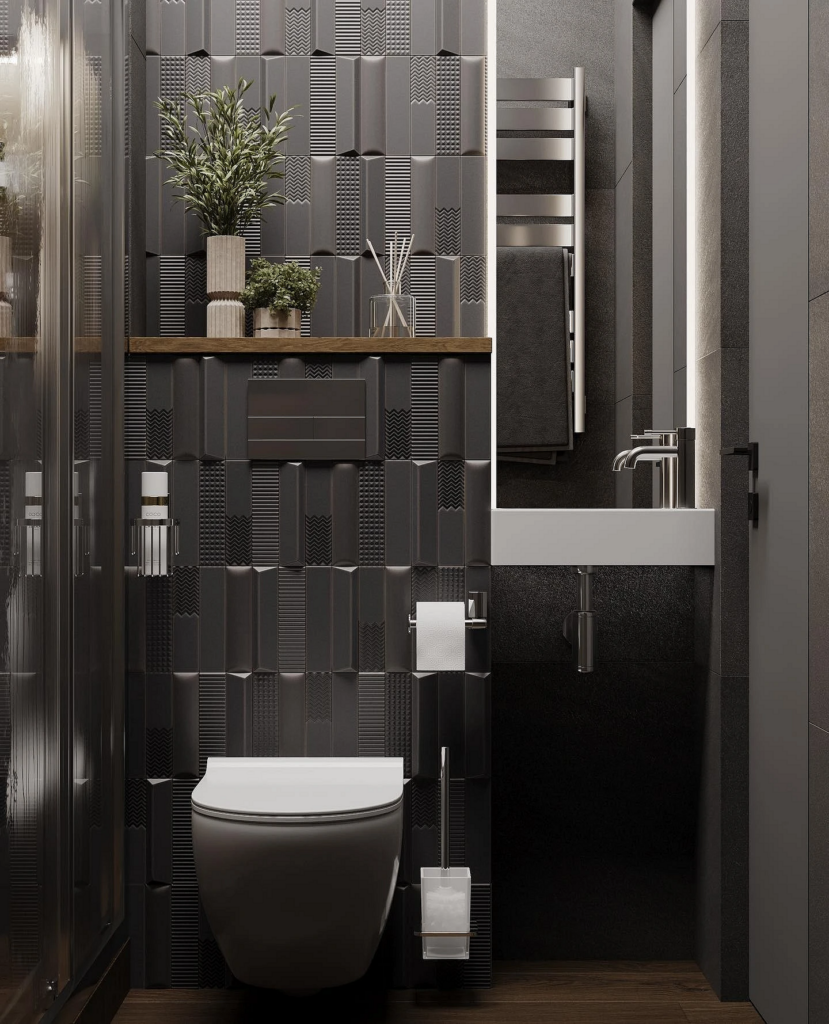
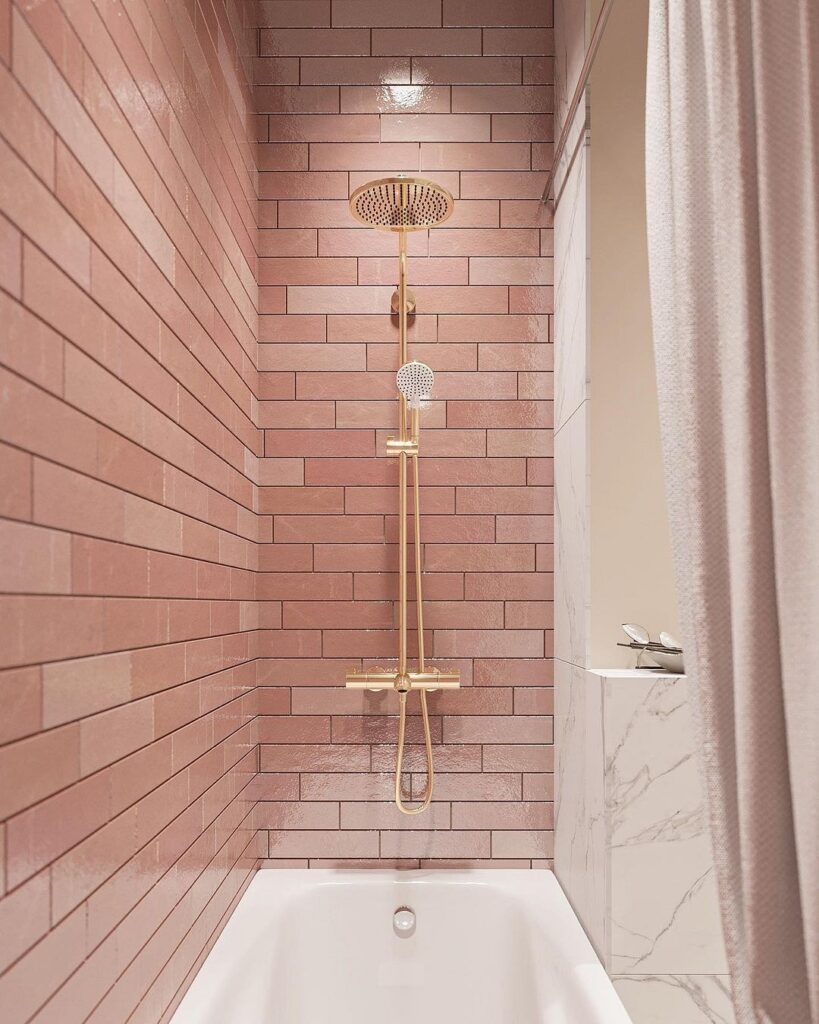
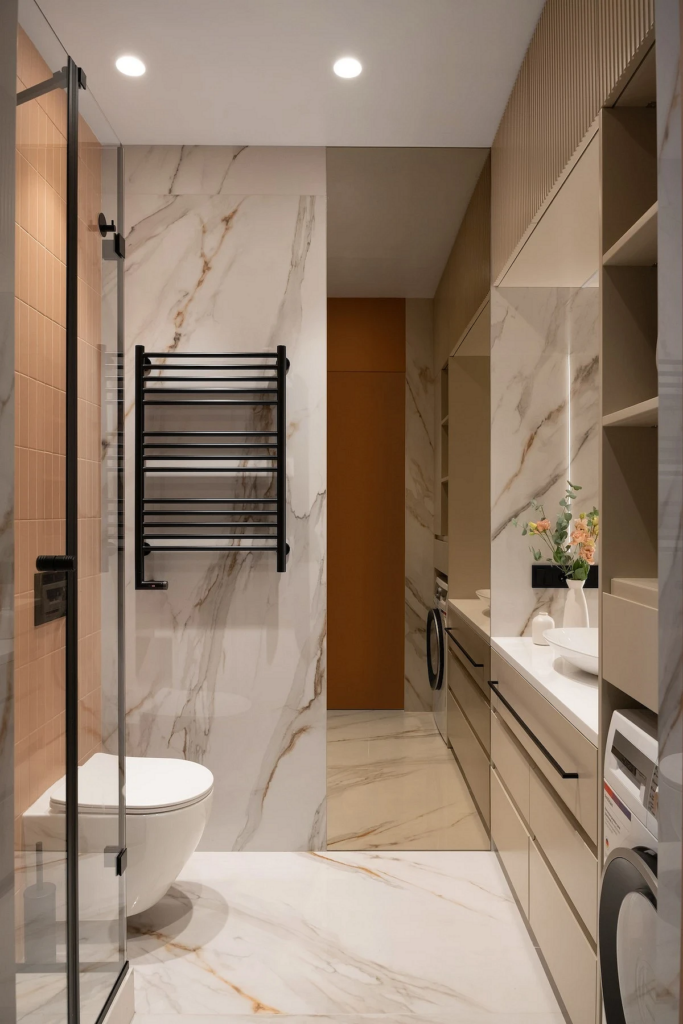
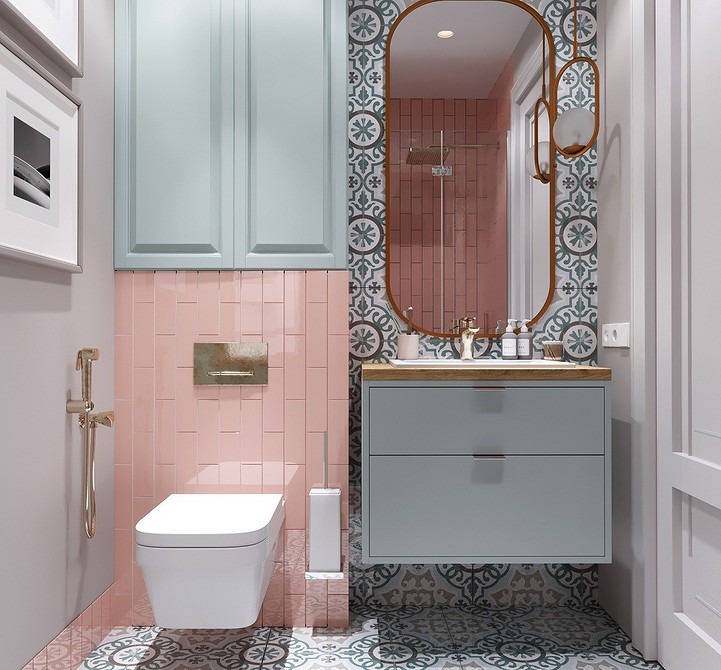
Matte, textured tile or porcelain is safe for flooring because it does not become slippery when you step out after a shower or bath. It also draws less attention to the size of the room.
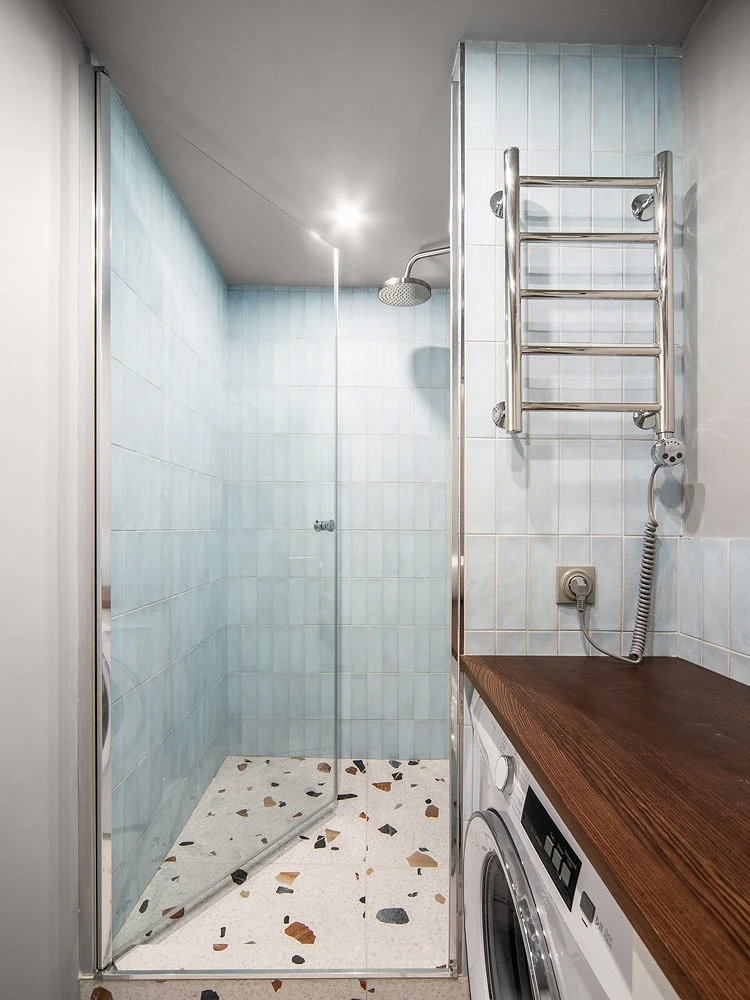
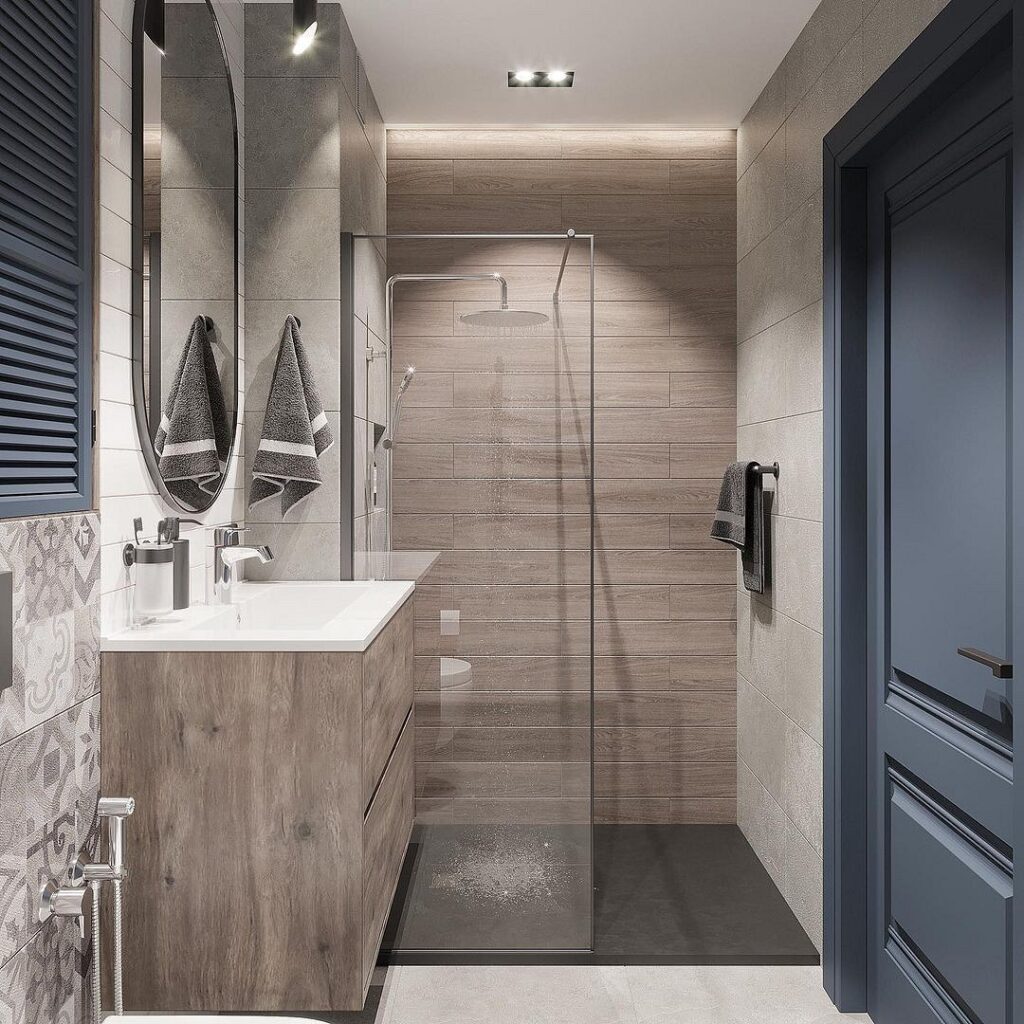
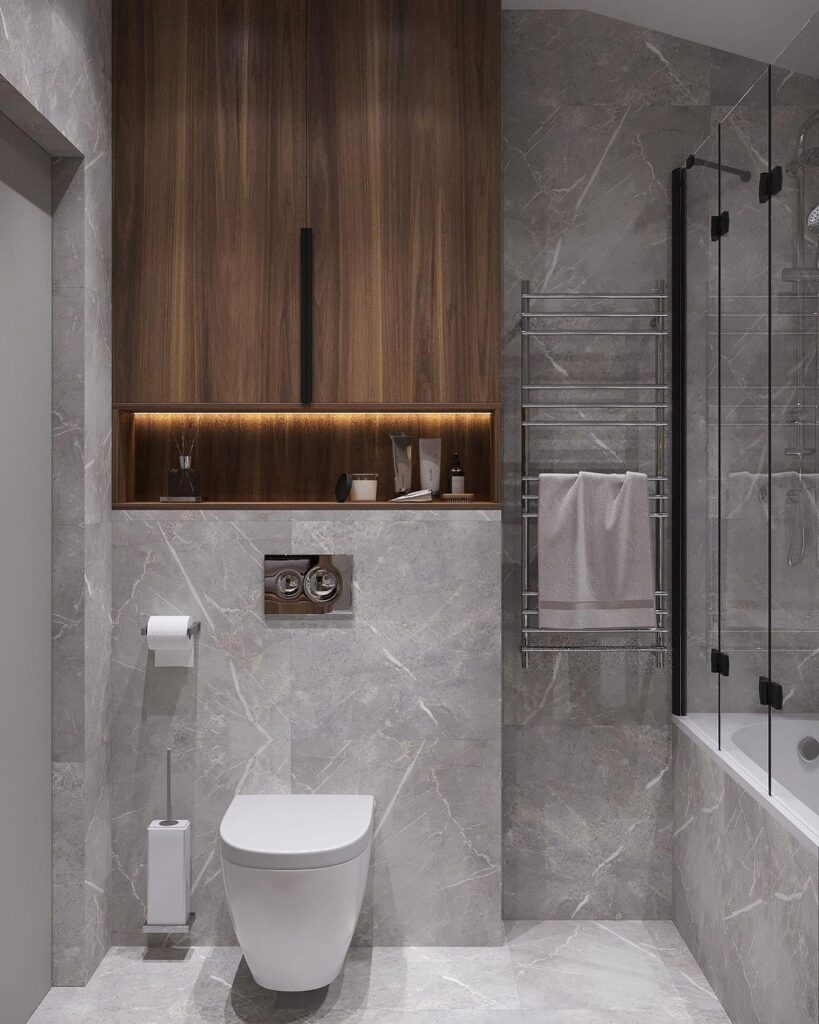
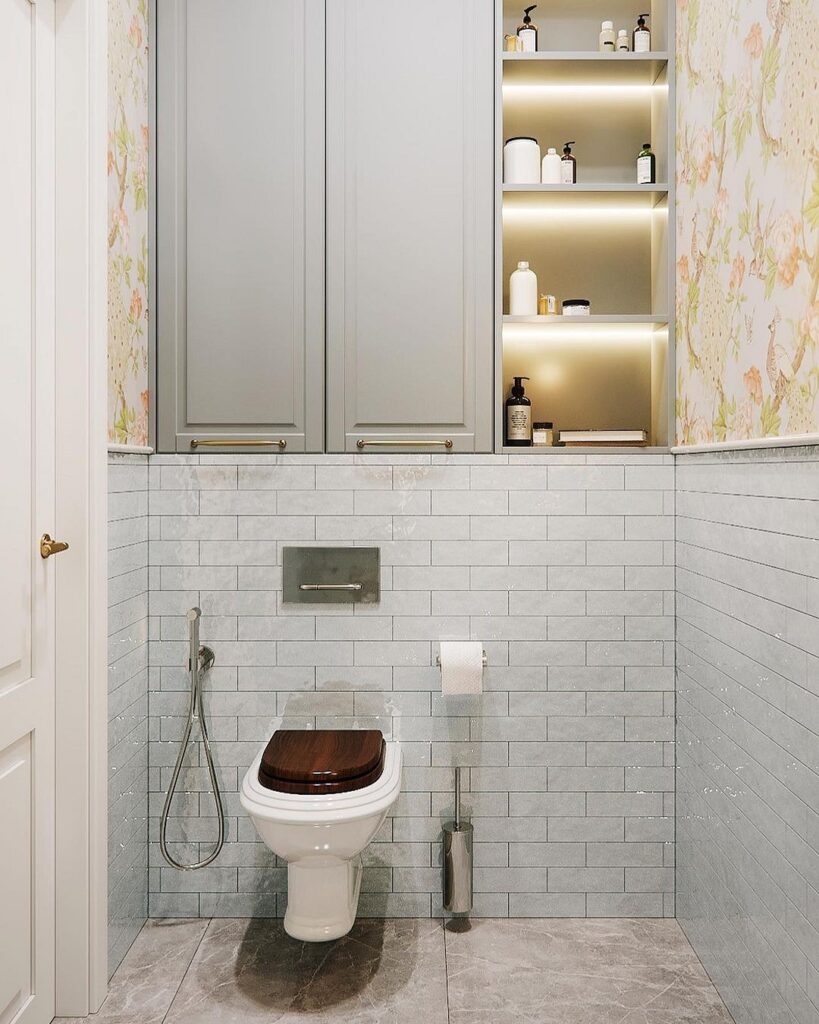
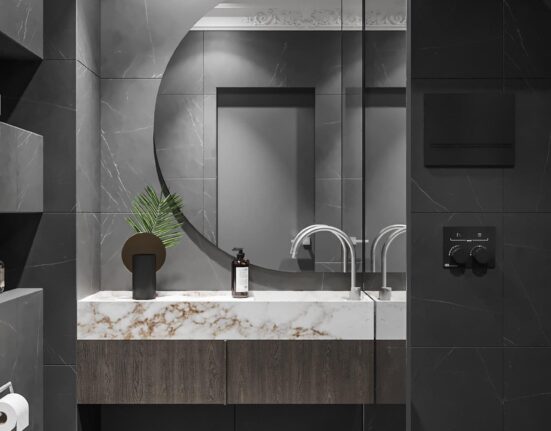
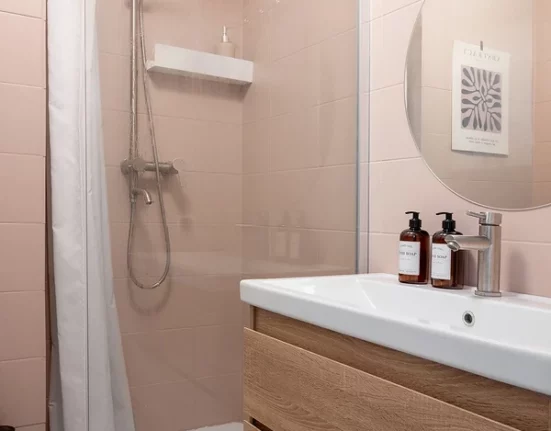


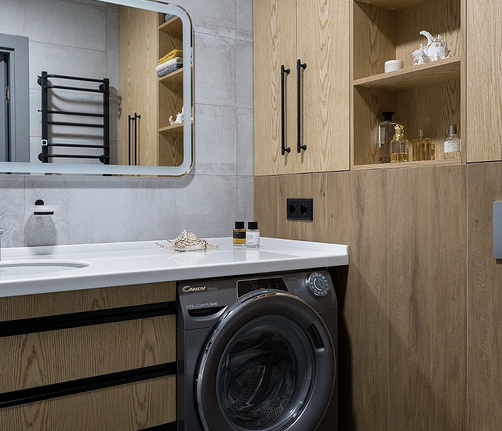

Leave feedback about this